Get Your ALL ACCESS Shop Pass here →
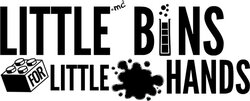

Easy Gravity Experiments For Kids
Why do things fall to the ground when you let go of them? It’s all to do with gravity! Learn about what gravity is with a simple definition and everyday examples of gravity. Explore simple physics with easy, hands-on experiments kids will love. From falling objects, balancing apples, and even an egg drop challenge, enjoy these fun gravity science projects for kids!
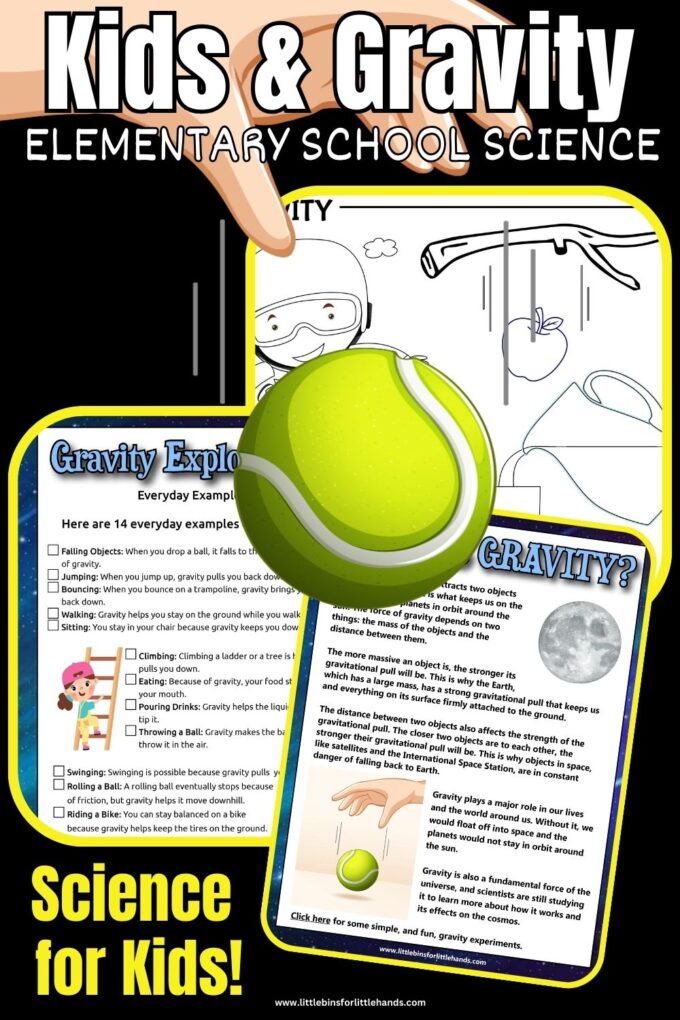
What is Gravity?
Gravity is a force that pulls objects toward each other. It’s why things fall to the ground when you drop them. On Earth, gravity pulls everything toward the planet’s center, so we stay on the ground instead of floating into space!
Gravity also keeps the planets in our solar system orbiting around the sun. The bigger something is, the stronger its gravity. So, Earth’s gravity is much stronger than the gravity of a small object like a ball, but not as strong as the sun’s gravity. Gravity affects everything around us, even though we can’t see it!
Have you ever watched a NASA video of an astronaut floating around inside his/her ship?
Galileo and Gravity
Galileo Galilei was a famous scientist who helped us understand how gravity works. He discovered that gravity is a force that pulls objects down toward the ground.
One of his famous experiments was when he dropped two objects of different weights from the Leaning Tower of Pisa to see if they would fall at the same speed. To everyone’s surprise, they did!
Galileo showed that gravity pulls all objects equally, no matter how heavy. This idea changed the way people thought about gravity and led to many important discoveries about how things move.

Ball Drop Experiment
- Two objects of different weights (like a small ball and a larger book)
- A chair or a step stool (to stand on safely)
What to do:
- Stand on the chair or stool (make sure you’re being safe!).
- Hold the two objects—one in each hand—at the same height.
- Drop both objects at the same time.
- Watch closely! Did they hit the ground at the same time?
What happens: Just like in Galileo’s experiment, you’ll see that both objects, even though they have different weights, should fall and hit the ground at the same time. This shows that gravity pulls objects to the ground at the same rate, no matter how heavy they are!
Everyday Examples of Gravity
Here are 15 everyday examples of gravity that are easy for kids to understand:
- Falling Objects: When you drop a ball, it falls to the ground because of gravity.
- Jumping: When you jump up, gravity pulls you back down to the Earth.
- Walking: Gravity helps you stay on the ground while you walk.
- Sitting: You stay in your chair because gravity keeps you down.
- Climbing: Climbing a ladder or a tree is harder because gravity pulls you down.
- Bouncing: When you bounce on a trampoline, gravity brings you back down.
- Swinging: Swinging on a swing set is possible because gravity pulls you back towards the Earth.
- Driving: Your car stays on the road because of gravity.
- Eating: Because of gravity, your food stays on your plate and in your mouth.
- Pouring Drinks: Gravity helps the liquid flow from a cup when you tip it.
- Throwing a Ball: Gravity makes the ball come back down after you throw it in the air.
- Rolling a Ball: A rolling ball eventually stops because of friction, but gravity helps it move downhill.
- Riding a Bike: You can stay balanced on a bike because gravity helps keep the tires on the ground.
- Water Flow: Water flows downhill because of gravity, which is why rivers and streams exist.
- Kite Flying: Gravity keeps the kite from flying too high, and the tension in the string is balanced by gravity pulling it downward.
Can you think of any more examples of gravity?
Free Gravity Information and Activity Pack
Get up and test gravity for yourself with a free gravity activity pack ! Share this information guide, quick activity, and gravity coloring sheet with your kids!
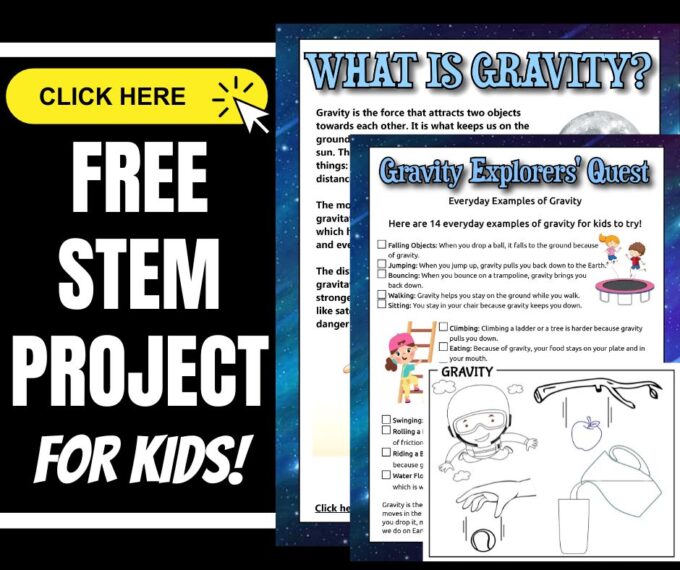
12 Gravity Experiments To Try
Here are 12 gravity science experiments that are great for elementary school kids. Learn about gravity and its effects in a fun and hands-on way.
You may also want to explore: Air Resistance Projects
Dropping Objects
Gather various objects of different weights and sizes (e.g., a feather, a paperclip, a small ball). Have kids predict which object will hit the ground first when dropped simultaneously and then test their predictions.
Paper Airplane Challenge
Have kids create paper airplanes of different sizes and shapes. Let them fly the planes and observe how gravity affects their flight paths differently based on their designs. See how to make a paper airplane launcher.

Falling Rates
Use a ruler or a measuring tape to drop different objects from the same height and measure the time it takes for them to reach the ground. Compare the falling rates of various objects.
Balloon Rocket
Attach a string to a balloon and tape the other end to a straw. Inflate the balloon and then release it. Observe how the air escaping from the balloon propels the straw in the opposite direction due to Newton’s Third Law of Motion.

Coin and Card Drop
Place a playing card on the edge of a table and let half of it hang over the edge. Hold a coin over the card’s hanging part and let it go. The card will fall due to gravity, but the coin’s rapid descent might surprise the kids as they learn about mass and air resistance .
Design A Parachute
Explore how mostly the forces of gravity and air resistance (also known as drag), slow down the descent of an object or person using a simple parachute. Vary the shape, size or material of the parachute and measure what happens.
Build A Pipeline
Make your own pipeline that will transport water from the main tank to a smaller tank using an incline. Observe how the moves because of gravity.
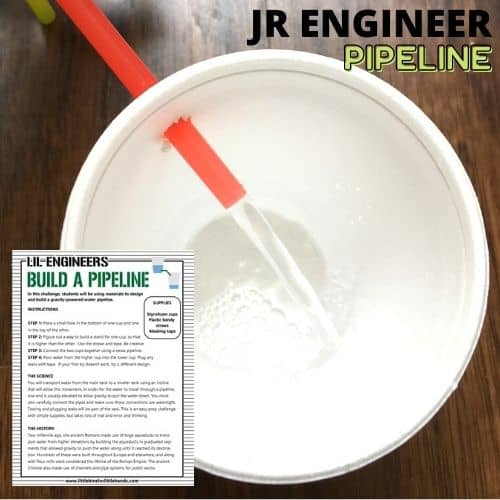
Water Upward
Fill a glass with water and place a piece of cardboard on top. Hold the cardboard and glass firmly together, then quickly turn the glass upside down. The water will stay inside the glass due to air pressure, demonstrating the balance between gravity and air pressure.
Rolling Race
Set up a ramp using books or a board. Have kids release different objects (marbles, toy cars) from the top of the ramp and see which one reaches the bottom first. Discuss how gravity affects the speed of rolling objects. See how to set it up with toy cars , pumpkins , apples and plastic Easter eggs .

Gravity-Powered Pendulum Painting
Attach a small container with paint to the bottom of a pendulum (a string with a weight at the end). Set the pendulum in motion and observe how it creates unique patterns on a piece of paper beneath it.
Crumpled Paper Drop
Crumple two pieces of paper into balls, one larger and one smaller. Drop them both at the same time and discuss how their sizes and air resistance affect their falling speed.
Balancing Act
Have kids experiment with balancing different objects on their fingertips. Discuss how the weight and shape of objects affect their balance due to the force of gravity. Have fun balancing animal puppets , mobile of paper shapes , pumpkins , and paper apples .
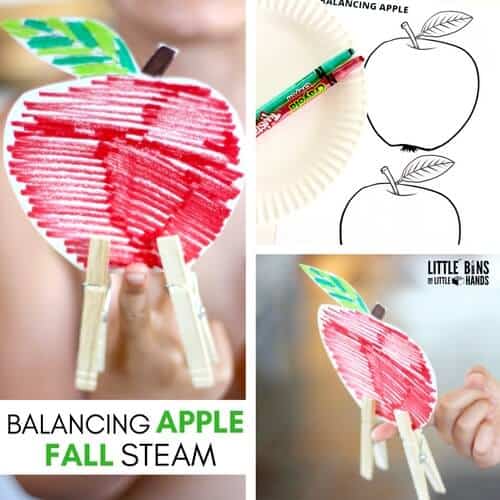
Egg Drop Challenge
Provide kids with materials like straws, rubber bands, tape, and newspapers. Challenge them to design a structure that will protect a raw egg when dropped from a certain height, demonstrating how objects experience less impact force when they have more time to slow down (larger parachutes or cushioning). See our egg drop ideas for younger and older students.
Water Wheel
Build a simple water wheel using a plastic container, a stick, and a paper cup. Place the water wheel under a steady stream of water and observe how gravity causes the wheel to turn. See how to build a simple water wheel here.
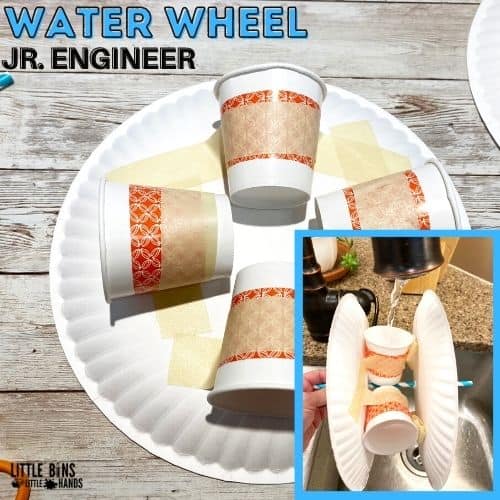
Have younger kiddos? Check out these fun gravity activities for preschool and kindergarten.
The Most Famous Gravity Experiment
Sir Isaac Newton is famous for many contributions to physics, and his experiments with gravity are among his most renowned works. One of the key experiments associated with Newton’s study of gravity is often called the “Newton’s Falling Apple,” which is a story rather than a controlled experiment.
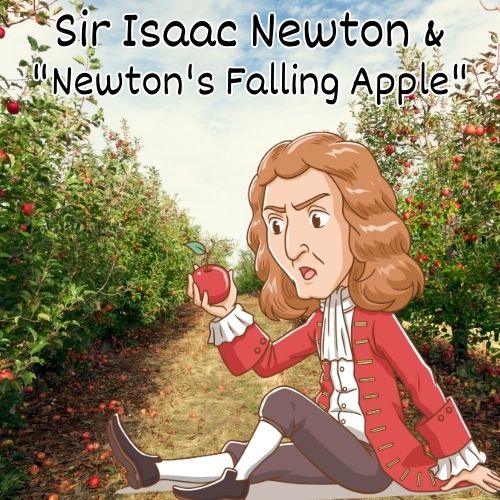
According to the legend, Newton was sitting under an apple tree in his garden when he saw an apple fall to the ground. This event got him thinking about the force that caused the apple to fall. Newton realized that the same force, gravity, was responsible for the apple’s fall and the motion of bodies in space like the Moon and planets.
While this story is well-known, it’s important to note that it wasn’t a formal experiment. However, Newton conducted a series of experiments and observations to develop his laws of motion and the law of universal gravitation. These experiments and observations included:
- Prism Experiments: Newton’s experiments with prisms and light led to his groundbreaking work on optics, which is separate from gravity but an important part of his overall scientific contributions. See Newton’s color wheel spinner.
- Mathematical Calculations: Newton used mathematics to formulate his laws of motion and universal gravitation. He developed the mathematics of calculus to help describe and predict the behavior of objects under the influence of gravity.
- Kepler’s Laws: Newton built upon Johannes Kepler’s laws of planetary motion to develop his laws of universal gravitation. Kepler’s work was based on extensive astronomical observations.
So, while there isn’t a specific experiment directly related to the falling apple, Newton’s contributions to our understanding of gravity are based on a combination of observations, mathematical calculations, and experiments.
Have fun with physics! Check out our complete list of easy physics experiments.
Grab your FREE printable science worksheets!
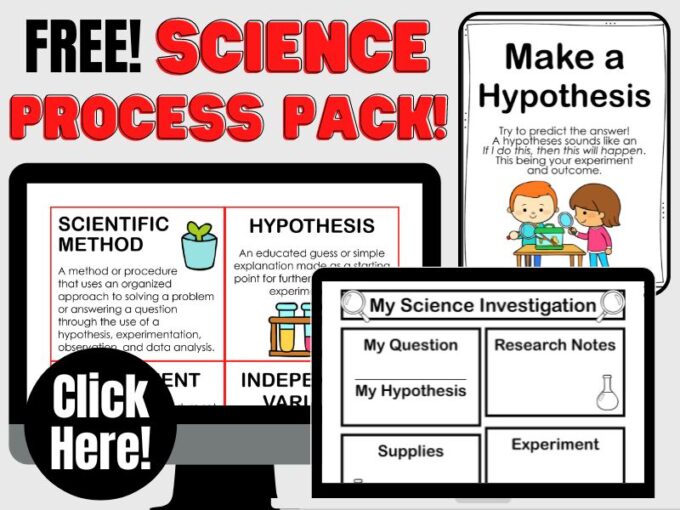
Helpful Science Resources To Get You Started
Here are a few resources that will help you introduce science more effectively to your kiddos or students and feel confident yourself when presenting materials. You’ll find helpful free printables throughout.
- Best Science Practices (as it relates to the scientific method)
- Science Vocabulary
- 8 Science Books for Kids
- All About Scientists
- Science Supplies List
- Science Tools for Kids
- Join us in the Club
More Physical Science Activities
- Light Experiments
- Magnet Activities
- Simple Machine Projects
- Potential & Kinetic Energy
- Static Electricity
- Surface Tension Experiments

Printable Science Projects For Kids
If you’re looking to grab all of our printable science projects in one convenient place plus exclusive worksheets and bonuses like a STEAM Project pack, our Science Project Pack is what you need! Over 300+ Pages!
- 90+ classic science activities with journal pages, supply lists, set up and process, and science information. NEW! Activity-specific observation pages!
- Best science practices posters and our original science method process folders for extra alternatives!
- Be a Collector activities pack introduces kids to the world of making collections through the eyes of a scientist. What will they collect first?
- Know the Words Science vocabulary pack includes flashcards, crosswords, and word searches that illuminate keywords in the experiments!
- My science journal writing prompts explore what it means to be a scientist!!
- Bonus STEAM Project Pack: Art meets science with doable projects!
- Bonus Quick Grab Packs for Biology, Earth Science, Chemistry, and Physics.

Subscribe to receive a free 5-Day STEM Challenge Guide
~ projects to try now ~.
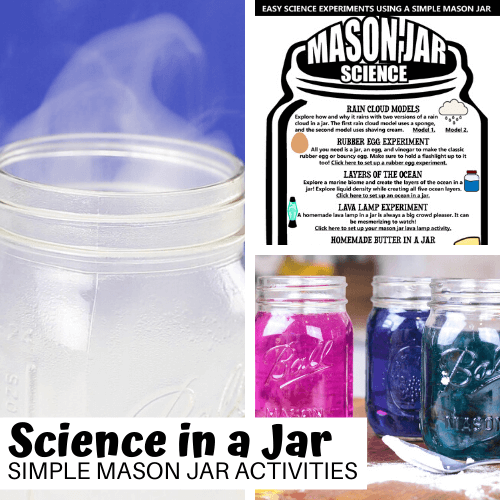
No products in the cart.

NGSS Gravity Lessons – Gravity on Earth Fifth Grade Science Stations
Ever have one of THOSE weeks, where you think you’re prepared to guide your fifth-grade students to the highest heights of science learning, only to feel like some unseen force is pulling you back down? You’ve tried to prepare your lesson plans, but the overwhelming task of teaching NGSS gravity lessons seems to weigh on you, making it difficult to get a jump on things. Trust us when we say, you’re not alone.

Because many of us have felt overwhelmed, we’ve developed NGSS gravity lessons and Gravity on Earth science stations to help relieve some of that pressure. They might even put a little extra bounce in your step!
Through eight different science stations, your students will gain a better understanding of gravity, including mass, weight, and the pull of an object toward the Earth’s center. All of these stations meet the Next Generation Science Standards for Fifth Grade (5-PS2-1).
We include everything the NGSS standards require for your fifth-graders to understand Gravity on Earth. These eight science stations teach and incorporate important skills through labs, experiments, videos, reading passages, and games. They’re fun, engaging, and your students will love them!
Let’s take a closer look to find out what that looks like!
What’s Included in the Gravity Lesson Plans for 5th Grade?
Let’s start by going over what these science stations are actually about. In these NGSS gravity lesson plans for 5th grade, students learn about gravitational force. What’s the difference between weight and mass, and what do they have to do with gravity? How does air resistance play a role in an object’s reaction to the pull of gravity?
During these gravity experiments, students make observations, construct explanations, use evidence to support a claim, and design solutions to problems. The NGSS gravity lessons contain challenging material for fifth graders, with new words and concepts in easy-to-implement, interactive stations.

Focus on NGSS Standards for 5-PS2-1
Next Generation Science Standards are written to be “Three Dimensional.” The three dimensions are Performance Expectation, Disciplinary Core Idea, and Science and Engineering Practices/Crosscutting Concepts .
The Gravity on Earth Science Stations Unit focuses on these standards:
- Performance Expectation 5-PS2-1. Support an argument that the gravitational force exerted by Earth on objects is directed down.
- 5-PS2.B – The gravitational force of Earth acting on an object near Earth’s surface pulls that object toward the planet’s center.
- Conduct an investigation collaboratively to produce data to serve as the basis for evidence, using fair tests in which variables are controlled and the number of trials considered.
- Cause and effect relationships are routinely identified, tested, and used to explain change.
Big Idea Posters for Gravity on Earth
Bit Idea posters are a great way to explain the core science ideas that students will learn in this unit of study.
Some of the Big Ideas include:
- The difference between Mass and Weight, and how both are related to gravity
- How Friction and Air Resistance relate to Gravity
- What Gravitational Force is

There are six Big Idea Posters in this unit. Only the Gravity on Earth Unit Bundle includes the Big Idea Posters. The Posters are not included for each individual station.
Gravity on Earth Vocabulary Cards
You need vocabulary cards in order to help your students understand what they’re reading about, right? The problem is, your students might not be thrilled about them. Maybe, they’re a little intimidated by them, too. We have a solution that will make vocabulary cards appealing and exciting.

Included in the Gravity on Earth Unit Bundle are two sets of vocabulary cards. They are not available for each individual science station.
One set of vocabulary cards includes colorful pictures with the words and to-the-point definitions. Each card has cutting lines, which makes this set perfect for a matching game. Cut out the three sections (picture, word, definition), mix them all up, and let the fun begin!
Pro-tip: Laminate the cards and you can use them year after year. Or, you can have your students glue them in their science notebooks.
The second set of cards is perfect for a science word wall. Each card comes with the word and definition in a larger font. It makes for great classroom reminders.
Differentiated Responses for Each NGSS Gravity Science Station
The old saying “one size fits all” has never proven true for anything. It’s especially not true when it comes to teaching children. That’s why all of our science stations, including the Gravity on Earth Science Stations, are created with the idea to offer five different ways for students to interact with each station. They include:
- short answer questions
- fill-in-the-blank questions without a word bank
- fill-in-the-blank with a word bank
- task cards with short answers
- task cards with multiple choice
All the variations are similar to one another but require a different level of independence. The fill-in-the-blank is the easiest and is perfect for your students who struggle with reading. The short answer is the most difficult as it requires students to construct their own responses without much support.
Choose the format that best fits your classroom and students. Students are also encouraged to use their science journal task cards. Answer keys are included.
Some activities also include an activity sheet or worksheet in addition to the differentiated responses. This activity sheet is the “work” of the station while the differentiated responses require students to think broadly about the topic and concept.
You can find examples of the questions in some of the images below.
Reading Passages for Gravity on Earth Science Stations
All stations, except the Watch and Play stations, include reading passages. Most of the reading passages are optional, but they do build students’ background knowledge and solidify key concepts. Use gravity reading passages in your lesson plans if your students do not have prior knowledge of the topic of the station.
The reading passages come in two formats. You’ll see versions of both of these formats in the photographs below. Both versions have the same text, but different layouts.
- Full-page with color border
- Two-Column with a black border
See examples of the two formats in the images below.
Google Classroom Components
All of our fifth-grade science stations come with components easily integrated with Google Classroom. Google Forms and Google Slides are included for most stations.
- A Google Form™️ with Reading Passage & Differentiated Questions is available for the Watch, Investigate, Diagram, Read, Model, Explore, and Sort stations.
- Google Slides™️ with Activity Directions & Worksheets are available for Investigate, Diagram, Model, Explore, and Sort.
Most of the hands-on activities still require physical components, but we have provided the directions and recording sheets in Google Slides.
Watch a Video about Gravitational Forces
Perfect for the big classroom screen or personal devices, this station will have students watching a video or two about Gravity. One video offered is about gravitational force, while the other is about how mass, weight, and air resistance relate to gravity. We recommend that you pick one video, but if you have the time, feel free to do both.
After watching, students will answer questions about the video. This station contains several worksheets with open-ended, short-answer questions, fill-in-the-blank sentences, and more. Task cards are also included.

There are two videos included in this science station. One of the videos is pictured here.
Play a Game About Gravity on Earth
One of students’ favorite stations (of course…): The Play A Game Science Station! In this station, students will play a board game or complete a crossword puzzle or word search puzzle to reinforce what they have learned about gravity.
During the board game, students work together to answer questions and move along the board. T-E-A-M-W-O-R-K!
Also included are a crossword puzzle and word search. There are two versions of the crossword puzzle; one with a word list, and one without. The crossword puzzle and word search also come in digital formats. The digital form changes each time the page is loaded so each student can work on his or her own versions of the puzzles.
Investigate Gravity Lesson with a Marble Run
Who doesn’t love a good marble run? In this station, students read about gravity, then try and predict how gravity will affect the marble on its track. Differentiated questions to see if students are staying on track with what they’ve learned are included.

Diagram the Direction of Gravity Lesson
In this station, students read about gravitational force and other forces that affect it. They will then create a diagram to illustrate what they read.

Read About Gravitational Force
Students read and answer questions about gravitational force in this station. It can be perfect to use for individual reading or classroom cooperative reading.

Model Gravity Using a Parachute
Have you ever been skydiving? What about your students? Do they know how parachutes work? In this station, students will read about gravitational force and how other forces affect it. They will then model how these other forces affect gravity with the example of a parachute!

Explore Gravity with a Race to the Bottom
Pinewood derby’s are popular do-it-yourself (or rather, parents-do-it) races. Racers construct racecars out of pinewood blocks, and send them down long decline tracks, hoping theirs will reach the bottom first. But, how do they make their car faster than anuone else’s? And, what does any of this have to do with gravity? In this station, students read about gravitational force, the other foreces that affect it, and answer questions about what they read. Hopefully, after exploring this station, they’ll have an advantage the next time they make their supreme racecar!

Sort Gravitational Force or Not
In this station, students will read about gravitational force, and all the forces that affect it, then play a sorting game. They will sort various scenarios into two categories: Result of a Gravitational Force, or Not the Result of a Gravitational Force.

Here are a few examples for you to try. Which is caused by gravitational forces, and which aren’t?
- The moon stays close to theEarth.
- When things bake in the oven, they turn brown and look differently.
- Electricity causes the TV toturn on.
- The planets stay in orbitaround the sun.
- Ice melts and becomes water.

How to Purchase the Fifth Grade Gravity of Earth Science Stations
The Gravity of Earth Science Station Unit can be purchased on my website or on Teachers Pay Teachers .
Other Fifth Grade Science Stations
We have fifth-grade science stations for all of the NGSS Standards. Click below for information about each one!

Leave a Reply Cancel reply
Your email address will not be published. Required fields are marked *
Save my name, email, and website in this browser for the next time I comment.
Six Ideas For Gravity Science Projects - From Beginner to Advanced
- Dawn Marcotte
- Categories : Great ideas for science fair projects
- Tags : Homework help & study guides

Gravity Science Experiments
[caption id="" align=“aligncenter” width=“600”]
Every time you fall down you’re experiencing the pull of gravity. Gravity is defined as the force that pulls everything on earth toward the center of the earth. Sir Isaac Newton, rumored to have discovered gravity when he saw an apple fall from a tree, wrote mathematical formulas that proved the truth of experiments previously performed by Galileo centuries earlier. Some of these experiments can be replicated by students to learn about the force of gravity and how it relates to the motion of objects on earth.
Early Grade Gravity Science Projects
Observation Grade school students are just beginning to explore the world of science. Simple experiments to test gravity and how it affects the balance of objects will provide experience with observation. Students can observe gravity by balancing a pencil on their finger. Gravity is pulling the ends down toward the center of the earth, and if the pencil is not properly balanced it will fall off the finger. Expand the experiment by tying small objects to one end of the pencil to determine how this changes the point of balance. Marble Dropping Students can explore how gravity affects objects as they impact the Earth in a simple experiment using flour, a baking tray and a marble. Pour enough flour into the baking pan to create a layer one-inch deep. Spread newspaper under the pan of flour to make clean-up easier. Drop the marble onto the pan of flour. Carefully remove the marble from the pan and observe the crater in the flour. Drop the marble from different heights to test if the size of the crater will change. This experiment can also be done outside with rocks and a large area of mud. This experiment will allow students to better understand what happens when a meteor hits the earth. How Weight Affects Gravity Use a ping-pong ball and a piece of clay to test how the weight of objects affects gravity. Cut a ping-pong ball in half. Press a small piece of clay into the bottom of the first half ball. Insert a straw vertically into the clay. Pull the straw down toward the table and then release. The straw should flip back into a vertical position. Repeat the experiment with various sizes of clay balls attached to the top of the straw and observe the results.
Middle School Projects
Create a Gravity Measuring Device Middle school students can perform more advanced experiments. Students can explore the concept of how gravity affects balance and create their own gravity device with a candle, a needle, two glasses and two saucers. Cut off the bottom half-inch of a long candle to expose the wick. Push a needle through the center of the candle along its horizontal axis. Use the needle to balance the candle on the lip of two glasses. Place the saucers under each end of the candle so they catch the wax as it melts. Light both ends of the candle. Gravity will pull the heavy end down and cause it to drip more wax, thus making the other end heavier and causing the candle to oscillate between the two ends as the weight changes. Inclined Planes Another experiment is to use an inclined plane to test how gravity effects the movement of objects. Students can time how long a ball or car takes to roll down planes of different heights. A simple ramp made with a piece of plywood and a stack of books will provide an inclined plane that can be changed easily.
High School Experiments
Galileo’s Original Experiment High school students can mimic Galileo’s research: They can measure the speed of falling objects relating the time of the fall to the objects’ weight and size. Use marbles made of various sizes but of the same material and drop them from the same height. They should reach the floor at the same time. Use a marble and a ball the same size, but of different material, to identify the impact of air resistance on falling objects. Inclined Planes - Advanced Repeat the inclined plane experiment with model cars of various sizes. Test the importance of friction by laying a piece of fabric on the inclined plane and comparing the speed of the cars as they roll down the inclined plane. Modify the wheels of the cars to be larger or smaller to test the affect. Sources for additional experiments: Science Buddies https://www.juliantrubin.com/bigten/galileofallingbodies.html Isaac Newton Portrait Other science experiments - baking soda and vinegar Other science experiments - water and oil
- Skip to primary navigation
- Skip to main content
- Skip to primary sidebar

- FREE Experiments
- Kitchen Science
- Climate Change
- Egg Experiments
- Fairy Tale Science
- Edible Science
- Human Health
- Inspirational Women
- Forces and Motion
- Science Fair Projects
- STEM Challenges
- Science Sparks Books
- Contact Science Sparks
- Science Resources for Home and School
Gravity Experiments for Kids
July 5, 2021 By Emma Vanstone Leave a Comment
These gravity experiments are all fantastic demonstrations of gravity and a great way to learn about Isaac Newton and Galileo ‘s famous discoveries. If you enjoy them, do check our my book This IS Rocket Science which is full of exciting space activities demonstrating how rockets overcome gravity and other forces to launch into space followed by a tour of the solar system with an activity for each planet.
What is Gravity?
Gravity is the force that pulls objects towards the Earth. It’s the reason we walk on the ground rather than float around.
Gravity also holds Earth and the other planets in their orbits around the Sun.
Did you know – gravity exists on the Moon but it is not as strong as on Earth, which is why astronauts can jump higher on the Moon than on Earth. This article from ScienceAlert tells you how high you could jump on each planet in the Solar System compared to Earth.
Great Gravity Experiments for Kids
Galileo and gravity.
Galileo was a famous scientist in the 16th and 17th Century. His most famous observation was that two objects of the same size but slightly different mass (how much “stuff” it is made of) hit the ground at the same time, as far as he could tell, if they are dropped from the same height. This happens because the acceleration due to gravity is the same for both objects and that actually this acceleration has nothing to do with the mass of an object. This fact has been demonstrated many times, even on the moon with a feather and a hammer.
Back on our air-filled planet, if a feather and a ball are dropped from the same height they clearly do fall at different rates. This is because gravity is not the only force acting on the falling object, air resistance is also a factor and that does depend on quite a few properties of the object and the fluid it is falling in. This does include its mass, the surface area and how fast it is moving. The feather suffers a lot here being so light and having a much greater surface area.
Galileo dropped two balls of different weights but the same size off the Leaning Tower of Pisa, giving a hint that the mass of an object doesn’t affect how fast it falls.
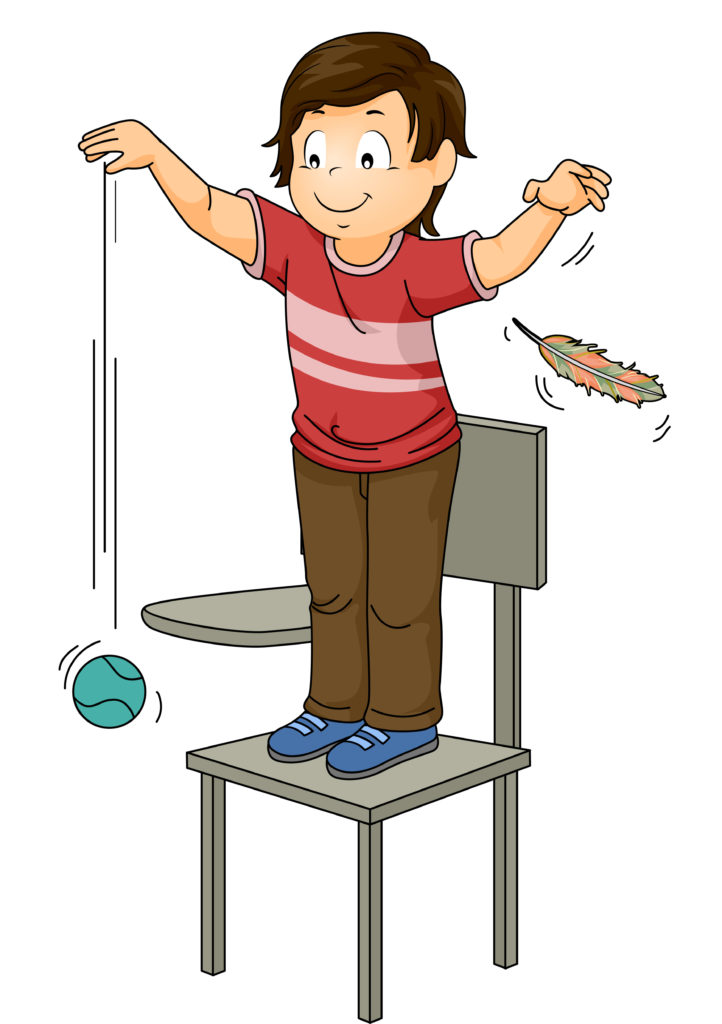
However if a ball and feather are dropped in a vacuum , where there is no air resistance as there’s no air, the ball and feather will fall together and hit the ground at the same time.
Bottle Drop Experiment
Following on from the ball and feather experiment another great example of Galileo’s discovery is to half fill one plastic bottle and leave another ( the same size ) empty. If dropped from the same height they will hit the ground at the same time!
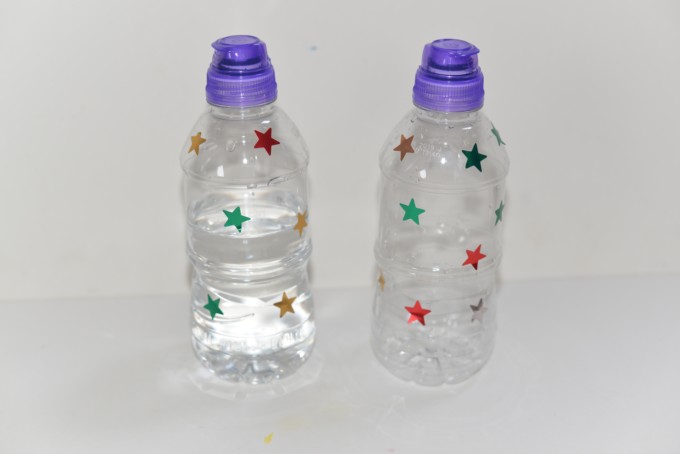
Issac Newton and Gravity
According to legend Issac Newton was sitting under an apple tree when an apple fell on his head, which made him wonder why if fell to the ground.
Newton published the Theory of Universal Gravitation in the 1680s, setting out the idea that gravity was a force acting on all matter. His theory of gravity and laws of motion are some of the most important discoveries in science and have shaped modern physics.
Film Canister Rocket
A film canister rocket is a fantastic demonstration of all three of Newton’s Laws of Motion , but it falls back to the ground thanks to gravity.
Water powered bottle rockets are another great fun example of gravity and lots of other forces too!
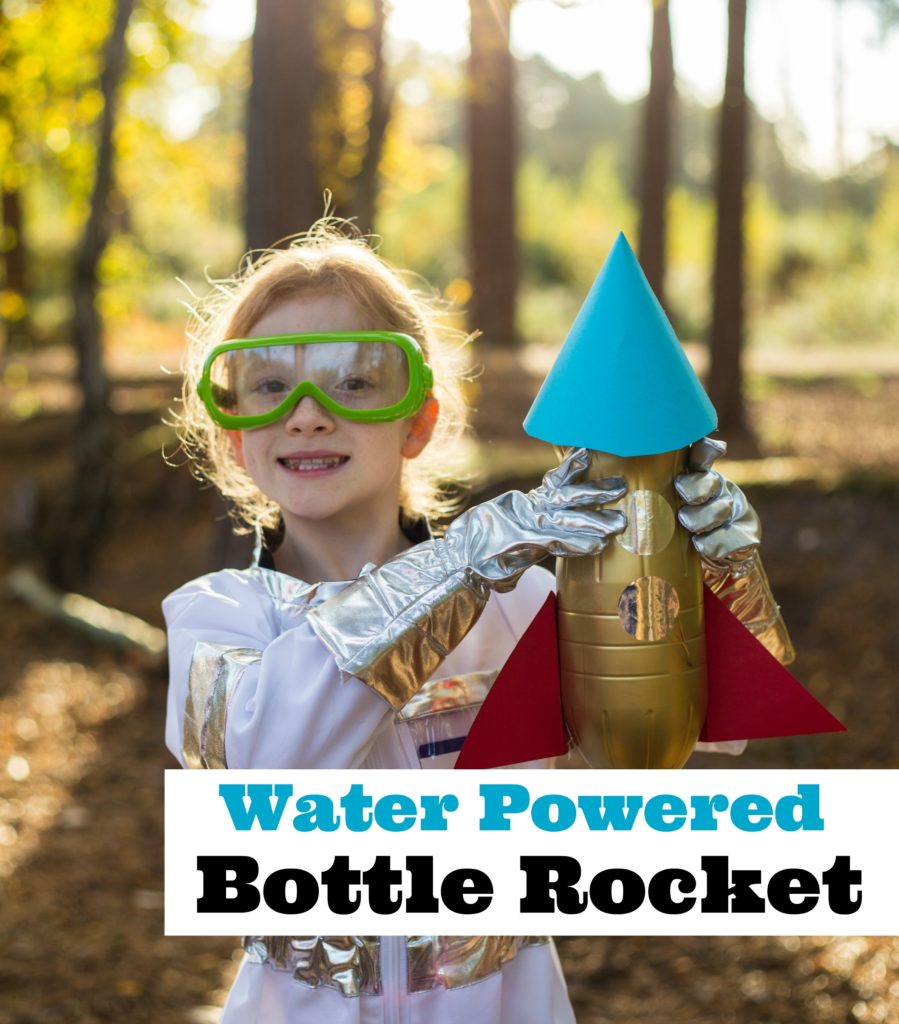
Defy gravity with a magnet
Did you know you can defy gravity using magnets. We love this activity as you can theme it however you want. Your floating object could be a spaceship in space, a flower growing towards the sun or even a plane in the sky.
The magnet holds the paperclip in the air as if it’s floating!
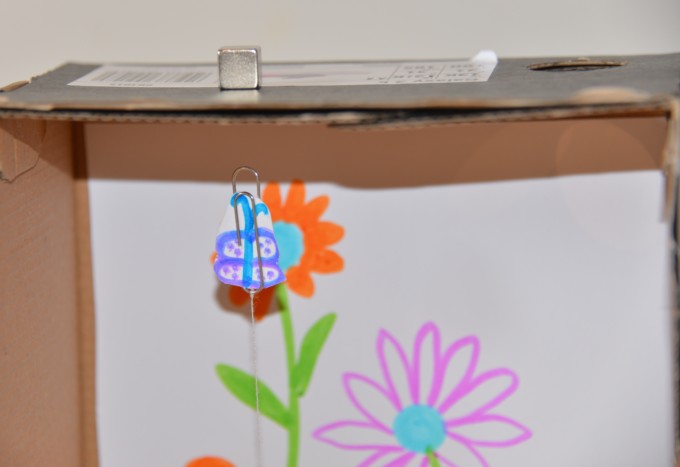
Straw Rockets – Gravity Experiment
Create your own straw rockets and launch at different angles to investigate how the trajectory changes. Of course these don’t have to be rockets, they could be anything you want, so get creative!
Parachutes are another great gravity experiment and perfect for learning about air resistance too!
Marble Runs
A DIY marble run is another hands on way to demonstrate gravity. Can you build one where the ball has enough energy to move uphill?
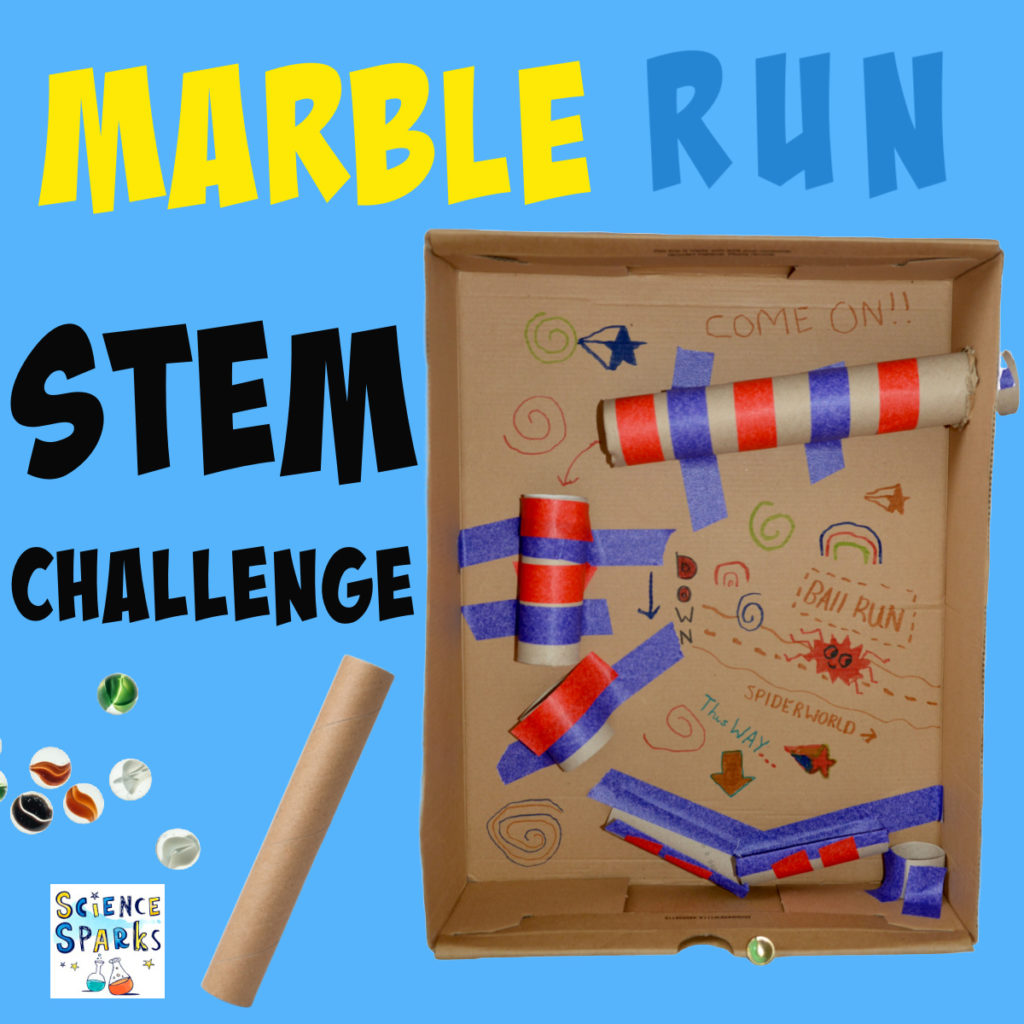
DIY Sling Shot
Finally, a simple slingshot is a brilliant and simple STEM project and perfect for learning about gravity as a shower of pom poms fall to the ground!
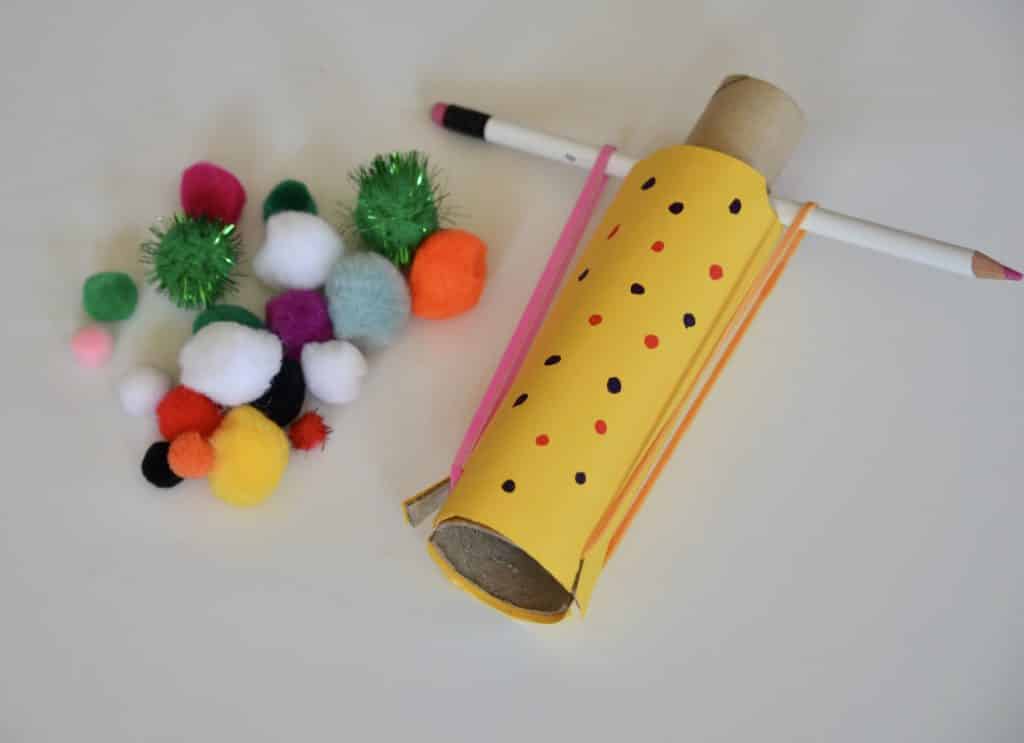
Last Updated on May 25, 2022 by Emma Vanstone
Safety Notice
Science Sparks ( Wild Sparks Enterprises Ltd ) are not liable for the actions of activity of any person who uses the information in this resource or in any of the suggested further resources. Science Sparks assume no liability with regard to injuries or damage to property that may occur as a result of using the information and carrying out the practical activities contained in this resource or in any of the suggested further resources.
These activities are designed to be carried out by children working with a parent, guardian or other appropriate adult. The adult involved is fully responsible for ensuring that the activities are carried out safely.
Reader Interactions
Leave a reply cancel reply.
Your email address will not be published. Required fields are marked *

Top 10 Gravity Experiments: Fun & Easy
Blow your mind with these easy and amazing gravity experiments!
Do you need a creative and engaging way to introduce students to the idea of gravity? Look not more than this collection of gravity experiments that students and teachers can perform in the classroom.
We’ve assembled a variety of experiments suitable for different age groups, covering concepts such as gravitational force, mass, weight, and free-fall motion. These hands-on, enlightening activities will not only help you grasp the fundamental principles of gravity but also ignite a lifelong fascination with physics.
1. Gravity-Defying Water Experiment
Students can learn more about the concepts of surface tension and the effects of gravity on liquids while having fun and being creative by trying out the gravity-defying water experiment.
2. Finding the Center of Gravity
The finding of the center of gravity experiment is an excellent way to introduce kids to the concept of balance and gravitational laws. These experiments also provide students with practical experience in learning the significance of the center of gravity in determining an object’s stability.
3. Anti-Gravity Galaxy in a Bottle
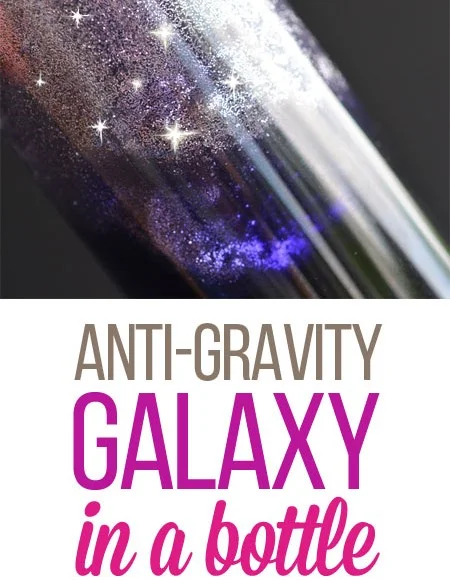
The anti-gravity galaxy in a bottle experiment is an engaging and innovative way to introduce children to the concepts of density and liquid characteristics.
Students can create a container that appears to defy gravity and gives the appearance of a galaxy by filling it with a vibrant mixture of glitter, oil, and water.
Learn more: Anti-Gravity Galaxy in a Bottle
4. Pool Noodle Marble Run
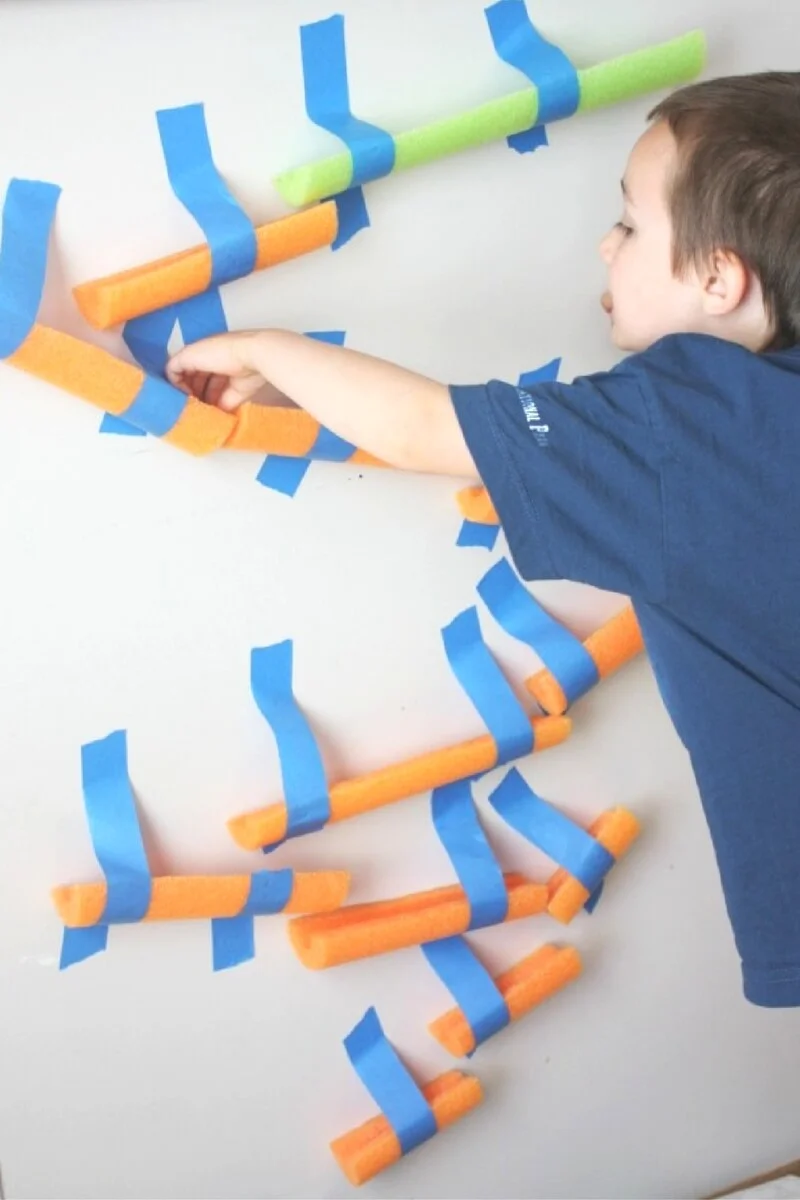
The pool noodle marble run gravity experiment is a fun and engaging way to teach students about the properties of gravity and motion.
In this experiment, students will create a track made from pool noodles and other materials to guide a marble as it travels from the top of the track to the bottom.
Learn more: Make a Pool Noodle Marble Run for Kids
5. Gravity Water Cup Drop
The water cup drop experiment teaches students about the laws of gravity and the effects of air resistance on falling items in a simple yet entertaining way. Students will perform this experiment by dropping a cup of water from a height and watching it fall.
6. Balloon Gravity Experiments
A creative and entertaining way to teach students about the force of gravity and its effects on objects is through the balloon gravity experiment.
By trying out these experiments, students can improve their problem-solving and critical-thinking skills while also learning more about the fundamentals of science.

7. DIY Balance Scales
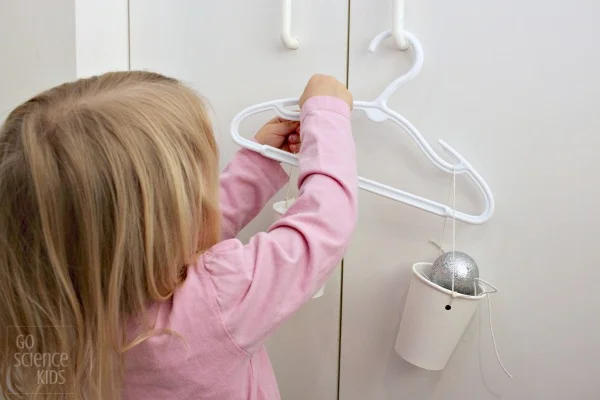
Making your own balancing scales is a creative and engaging approach to introduce pupils to the ideas of stability and balance. Students can improve their sense of balance and coordination by carefully arranging the objects in this activity and adjusting their position and orientation.
Learn more: DIY Balance Scales
8. How to Make a Bottle Rocket
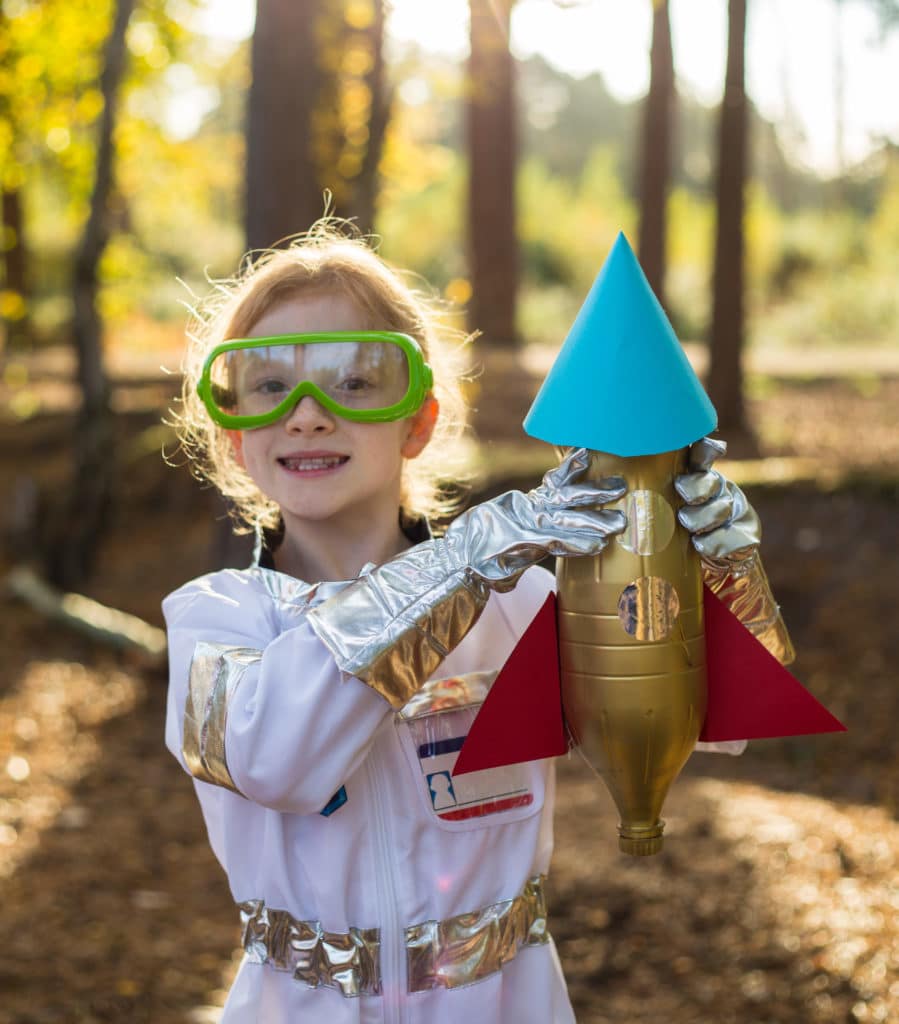
Making a bottle rocket for a gravity experiment is a fun and educational approach to teach students about the laws of physics and how gravity affects moving things. Students will use a plastic bottle, water, and pressured air to design and build a rocket during this project.
Learn more: How to Make a Bottle Rocket
9. Parachute Egg Drop Experiment
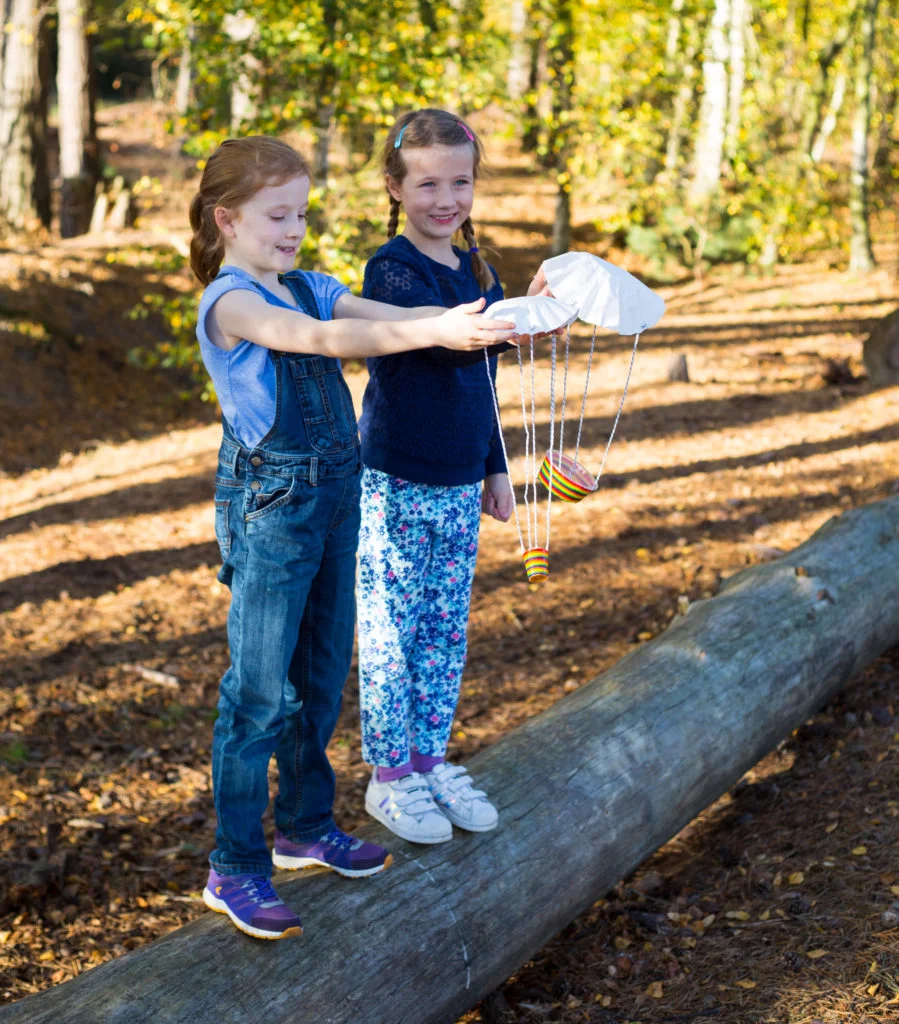
A fun and instructive technique to teach students about the fundamentals of physics and the science of aerodynamics is to try the parachute egg drop experiment. Students will design and build a parachute for this project.
This activity is a great bonus to any scientific curriculum because it is suited to different age groups and ability levels.
Learn more: Parachute Egg Drop Experiment
10. Putting Together the Gravity
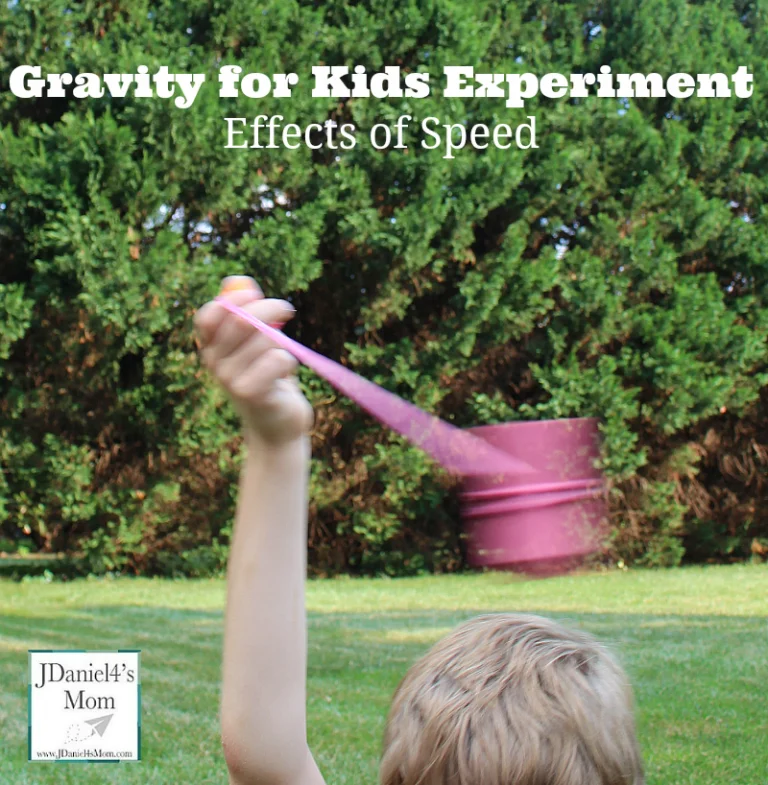
Putting together the gravity experiment is an exciting and educational way to teach students about the fundamental principles of physics and gravity.
In this experiment, students will design and create a setup that demonstrates the effects of gravity on different objects.
Learn more: Putting Together the Gravity
Similar Posts:
- 68 Best Chemistry Experiments: Learn About Chemical Reactions
- 37 Water Science Experiments: Fun & Easy
- Top 100 Fine Motor Skills Activities for Toddlers and Preschoolers
Leave a Comment Cancel reply
Save my name and email in this browser for the next time I comment.
Sciencing_Icons_Science SCIENCE
Sciencing_icons_biology biology, sciencing_icons_cells cells, sciencing_icons_molecular molecular, sciencing_icons_microorganisms microorganisms, sciencing_icons_genetics genetics, sciencing_icons_human body human body, sciencing_icons_ecology ecology, sciencing_icons_chemistry chemistry, sciencing_icons_atomic & molecular structure atomic & molecular structure, sciencing_icons_bonds bonds, sciencing_icons_reactions reactions, sciencing_icons_stoichiometry stoichiometry, sciencing_icons_solutions solutions, sciencing_icons_acids & bases acids & bases, sciencing_icons_thermodynamics thermodynamics, sciencing_icons_organic chemistry organic chemistry, sciencing_icons_physics physics, sciencing_icons_fundamentals-physics fundamentals, sciencing_icons_electronics electronics, sciencing_icons_waves waves, sciencing_icons_energy energy, sciencing_icons_fluid fluid, sciencing_icons_astronomy astronomy, sciencing_icons_geology geology, sciencing_icons_fundamentals-geology fundamentals, sciencing_icons_minerals & rocks minerals & rocks, sciencing_icons_earth scructure earth structure, sciencing_icons_fossils fossils, sciencing_icons_natural disasters natural disasters, sciencing_icons_nature nature, sciencing_icons_ecosystems ecosystems, sciencing_icons_environment environment, sciencing_icons_insects insects, sciencing_icons_plants & mushrooms plants & mushrooms, sciencing_icons_animals animals, sciencing_icons_math math, sciencing_icons_arithmetic arithmetic, sciencing_icons_addition & subtraction addition & subtraction, sciencing_icons_multiplication & division multiplication & division, sciencing_icons_decimals decimals, sciencing_icons_fractions fractions, sciencing_icons_conversions conversions, sciencing_icons_algebra algebra, sciencing_icons_working with units working with units, sciencing_icons_equations & expressions equations & expressions, sciencing_icons_ratios & proportions ratios & proportions, sciencing_icons_inequalities inequalities, sciencing_icons_exponents & logarithms exponents & logarithms, sciencing_icons_factorization factorization, sciencing_icons_functions functions, sciencing_icons_linear equations linear equations, sciencing_icons_graphs graphs, sciencing_icons_quadratics quadratics, sciencing_icons_polynomials polynomials, sciencing_icons_geometry geometry, sciencing_icons_fundamentals-geometry fundamentals, sciencing_icons_cartesian cartesian, sciencing_icons_circles circles, sciencing_icons_solids solids, sciencing_icons_trigonometry trigonometry, sciencing_icons_probability-statistics probability & statistics, sciencing_icons_mean-median-mode mean/median/mode, sciencing_icons_independent-dependent variables independent/dependent variables, sciencing_icons_deviation deviation, sciencing_icons_correlation correlation, sciencing_icons_sampling sampling, sciencing_icons_distributions distributions, sciencing_icons_probability probability, sciencing_icons_calculus calculus, sciencing_icons_differentiation-integration differentiation/integration, sciencing_icons_application application, sciencing_icons_projects projects, sciencing_icons_news news.
- Share Tweet Email Print
- Home ⋅
- Science Fair Project Ideas for Kids, Middle & High School Students ⋅
Simple Gravity Experiments

The Physical Factors Affecting Parachutes
Gravity is a fundamental part of nature that keeps our feet planted firmly on the ground. This unseen force is responsible for tides, keeping Earth from careening into the darkness of space, and for causing food to hit the kitchen floor when it slips from your hand. Though invisible, gravity's effects can be observed by performing simple and easy-to-do experiments.
Galileo's Experiment
Named after the scientist who is popularly believed (though not verified) to have performed this experiment, it involves taking two objects of different sizes and weights and dropping them to see which one hits the ground first. As the Earth's gravity affects objects at the same rate regardless of their weight, without air resistance the objects should hit the ground at the same time. Try this with different objects with varying weights and air resistance and observe its effects.
The Spinning Bucket
Showing the relation between motion and gravity, for this experiment you need a bucket with water and someone with a strong arm to spin it. In theory, when the bucket turns upside down the water should come spilling out as gravity pulls it downwards. Spinning it fast enough, the water tends to keep going in a straight line, counteracting the pull of gravity and thus wedging it to the end of the bucket, preventing the natural pull of gravity from spilling the water. This is why this effect, called “centrifugal force” is often referred to as artificial gravity.
The Hole in the Cup
For this experiment you need a paper cup and some water. Poke a hole in the cup and cover it with a finger; fill the cup with water. Take your finger from the hole and notice the water spills out. Though gravity pulls down both objects, only water moves freely (because you're holding the cup); thus, gravity forces the water out. Fill the cup again and drop it to the ground. Now that both objects are free to move, they drop at the same speed so the water isn't forced out of the hole.
Center of Gravity
A center of gravity experiment can be done quite easily; all that is required is a pencil or pen and your finger. Try to balance the pen at different positions on your finger until you reach the point where it doesn't fall off. This is the center of gravity of the pen, the point in which its weight averages out and, if it were in a weightless environment, the point at which it can freely rotate. Put on the cap and try to balance it again. As the weight of an object changes, so does its center of gravity.
Related Articles
Ocean tide experiment, facts about gravity for kids, difference between gravity & friction, what is gravitational pull, how to calculate drag force, when is the moon's pull on earth the strongest, how to demonstrate newton's laws of motion, newton's laws of motion, how to build an easy catapult for kids, how the mass of an object affects its motion, how to calculate the mass of a moving object, how to explain gravity to a child, first grade lesson plans on force & motion, how to find velocity from mass & height, what causes tides in the ocean, what are some examples of the laws of motion, cool gravity experiments, how does newton's laws of motion interact with tennis.
- Kids Science Experiments: Spinning Bucket of Water
- Discovery Channel: Gravity Gets You Down
- NASA: Center of Gravity
About the Author
Steve Johnson is an avid and passionate writer with more than five years of experience. He's written for several industries, including health, dating and Internet marketing, as well as for various websites. He holds a bachelor's degree from the University of Texas.
Photo Credits
Hemera Technologies/AbleStock.com/Getty Images
Find Your Next Great Science Fair Project! GO
- WordPress.org
- Documentation
- Learn WordPress
- Members Newsfeed
27 Gravity Activities for Elementary Students
- Elementary Education
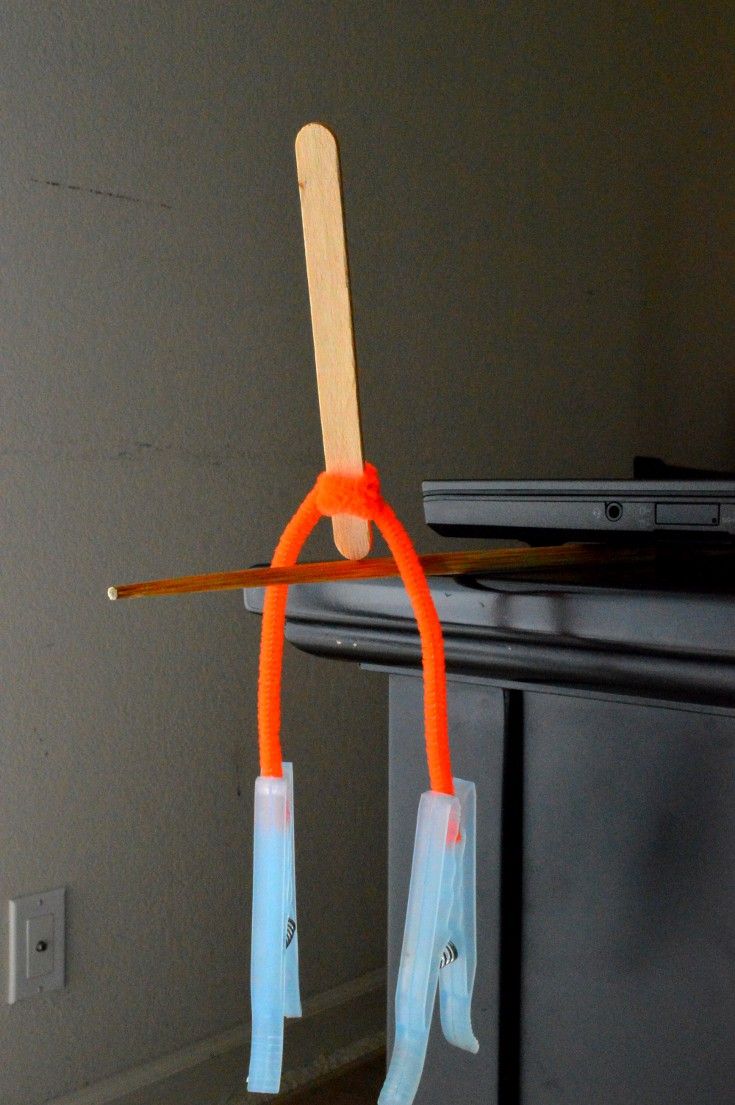
Introduction:
Gravity is a fundamental force in our universe, and understanding it is essential for any aspiring young scientist. Help your elementary students develop a deep appreciation and knowledge of gravity through these 27 engaging activities.
1.Gravity Drop Race: Set up a ramp with two equal lanes, then let kids pick two objects to race down the ramp.
2.Ball Bounce Experiment: Students measure how high different balls bounce on various surfaces.
3.DIY Parachutes: Let the children design and create their own parachutes using plastic bags, string, and tape.
4.Paper Airplanes: Teach kids about aerodynamics as they create, decorate, and test paper airplanes.
5.Coin Stacking Challenge: Students build tall coin towers to learn about balance and stability under gravity’s force.
6.Gravity-Defying Balancing: Use a pole or stick with weights at each end to help students balance objects on their fingers.
7.Moon Jump Activity: Set up an area where children can jump around and pretend they’re on the moon, simulating its weaker gravity.
8.Water Bottle Flipping: Teach kids the physics behind water bottle flipping through this popular challenge.
9.Falling Feather Experiment: Test how air resistance affects free-falling objects by comparing the descent of a pen and feather together.
10.Building Skyscrapers: Have students use building blocks to construct towers and experiment with meeting challenges under gravity’s force.
11.Marble Roller Coasters: Kids can design and test their own roller coasters using recycled materials like cardboard tubes and marbles.
12.Hovercraft Races: Use balloons and CD hovercrafts to explore friction, air pressure, and gravity in action.
13.Gravity Bead Maze: Create a maze using pipe insulation or tubes for students to guide a marble from start to finish using gravity’s pull.
14.Sink or Float Challenge: Kids predict if objects will sink or float in water, and then test their hypotheses.
15.Egg Drop Experiment: Students design and build contraptions to protect an egg from breaking when dropped from a height.
16.DIY Weight Scales: Teach children about the relationship between gravity and weight by having them make simple weighing devices using household items.
17.Spinning Top Challenge: Explore the effects of gravity and centripetal force through play with spinning tops.
18.Straw Rocket Launchers: Create straw rockets to demonstrate projectile motion and air resistance as factors in flight.
19.Human Pendulum: Use a rope swing to turn the students into human pendulums, exploring how gravity influences oscillation.
20.Marshmallow Catapults: Build mini catapults and have students explore how different angles affect distance traveled under gravity’s influence.
21.Magnetic Levitation: Use magnets to simulate anti-gravity levitation and teach children about magnetic forces.
22.Tug-of-War Challenge: Demonstrate the concept of center of mass as students engage in friendly tug-of-war competitions.
23.Freefall Painting: Have students create artwork by releasing paint-covered objects onto paper to explore gravity’s effect on motion.
24.Balancing Act Sculptures: Encourage creativity while exploring balance by having children create freestanding sculptures with clay, straws, or pipe cleaners.
25.Domino Gravity Chain Reaction: Set up dominoes for kids to knock down in a chain reaction, demonstrating gravitational momentum transfer.
26.Gravity-Defying Cup Stacking Activity: Challenge your students to stack cups without using their hands, employing tools like balloons or rubber bands instead.
27.Planet Gravity Comparison Activity : Use props (like balls of different sizes) to represent planets and have students compare gravitational pull on each one, discussing how it impacts.
Related Articles
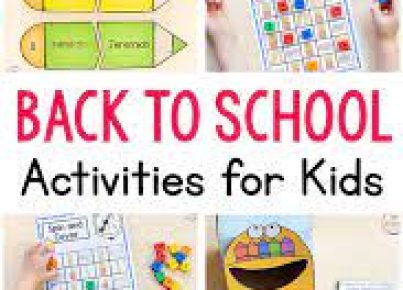
As summer ends and the new school year beckons, educators from preschool…

On Inauguration Day, educators have a unique opportunity to engage children in…
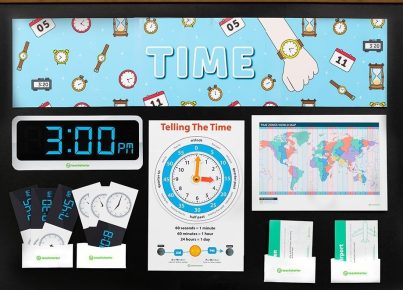
Unit Introduction: Understanding time is a critical skill that students need to…

Pedagogue is a social media network where educators can learn and grow. It's a safe space where they can share advice, strategies, tools, hacks, resources, etc., and work together to improve their teaching skills and the academic performance of the students in their charge.
If you want to collaborate with educators from around the globe, facilitate remote learning, etc., sign up for a free account today and start making connections.
Pedagogue is Free Now, and Free Forever!
- New? Start Here
- Frequently Asked Questions
- Privacy Policy
- Terms of Service
Are you sure you want to delete post?
This post cannot be restored anymore.
- Registration
Don't you have an account? Register Now! it's really simple and you can start enjoying all the benefits!
We just sent you an Email. Please Open it up to activate your account.
I allow this website to collect and store submitted data.
- Skip to main content
- Skip to primary sidebar

This post might contain affiliate links. Click here for more information . Thanks for visiting!
15+ Preschool Science Experiments that Explore Gravity
August 17, 2016 by Sheryl Cooper
Last Updated on July 22, 2024 by Sheryl Cooper
Inside: Explore gravity with these 7 fun preschool science experiments ! Activities that include pushing, throwing, and falling – all hands-on and fun!
Have you noticed how preschoolers are fascinated by things that move? Whether it’s pushing, throwing, or falling, they are very into it!
So why not tap into this interest?
Here are 7 fun preschool gravity experiments that you can add to your classroom or home activities , or for weekend fun.
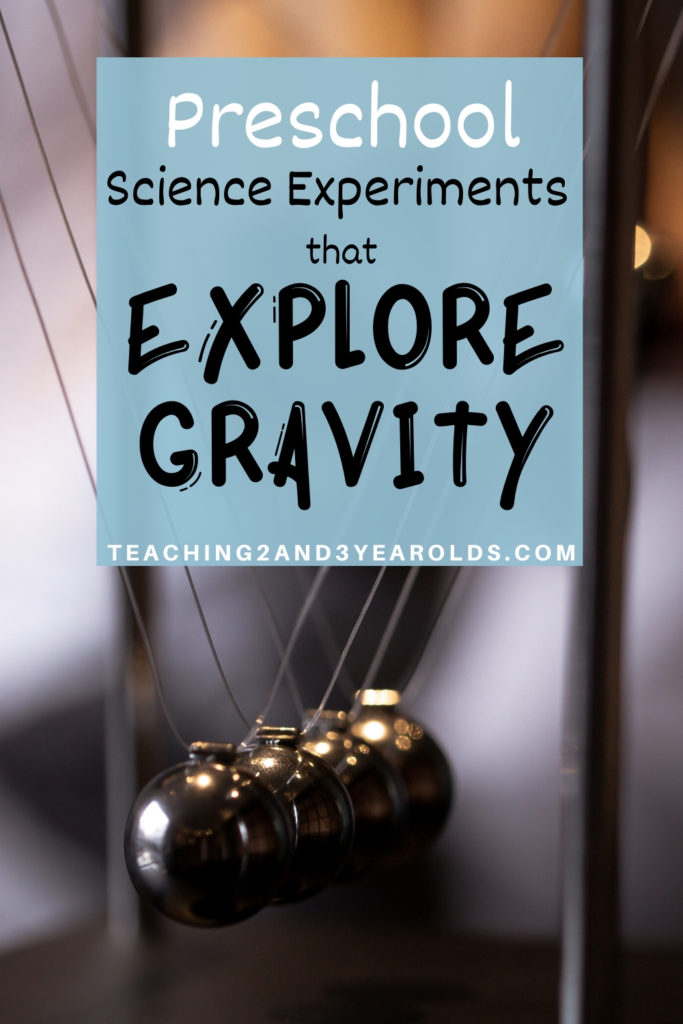
When talking about gravity with preschoolers, we keep it simple.
During our morning meeting or circle time , we demonstrate what happens if we drop an item.
We notice that it went down instead of up.
We can then try a gravity experiment during small groups, noticing that if we alter the movement or materials, things change.
This is basic and yet fascinating for this age group!
Defy Gravity – This super cool activity is easy to make with paperclips and magnets. (Buggy and Buddy)
Drip Painting – Discover what happens when watercolors are dropped from the top of a vertical surface.
Galaxy in a Bottle – The glitter doesn’t fall down, but instead rises as it settles. Crazy! (One Little Project)
Gravity Splatter Art – What happens when you drop something with paint on it?
Exploring Gravity with a Tube – Why does the position of the tube change the speed of the car? (HOAWG)
Exploring Gravity with Balance – Learn how to make a craft stick stand up right on a chopstick. (Rookie Parenting)
Gravity with a Pendulum – Learn about the forces of motion and gravity by placing paint in swinging pendulum. (Innovation Kids Lab)
Pool Noodle Gravity Play – Explore gravity and slope by making your own pool noodle marble run. (Little Bins for Little Hands)
Ball Dropping Experiment – Drop different types of balls and see which one hits the ground first. (Inspiration Laboratories)
Apple Races – Explore gravity, motion, slopes, and more as they are rolled down plastic rain gutters. (Little Bins for Little Hands)
Water in a Jar Activity – How can you stop water from coming out of a glass when it’s turned upside down? (The Homeschool Scientist)
Bottle Rocket Launch – After making your own bottle rocket, make it launch by pumping air into it. (Science Sparks)
Which One is Heavier – Make your own balance scale and find different objects to weigh. (Go Science Kids)
Parachute Egg Drop Experiment – Learn about gravity and air resistance while dropping an egg using a parachute. (Science Sparks)
Center of Gravity Balancing Activity – This Cat in the Hat inspired activity involves balancing objects on a single point. (Preschool Pool Packets)
Exploring the Effects of Speed – Learn how speed has an effect on the gravitational pull on an object. (JDaniel4’s Mom)

More science for preschoolers:
Rainbow Science Activities
Winter Science Activities
15 Space Activities
Check out our favorite science toys and materials:

More science resources:
Hands-On Preschool STEM Activities
Science Activities that Explore Gravity
10 Science Experiments Preschoolers Love
Check out our science pin board for more fun!
Free circle time planner.
Get your FREE circle time planner as a gift when you subscribe to my free weekly newsletters.
Here is my Privacy Policy
Success! Now check your email to confirm your subscription.
There was an error submitting your subscription. Please try again.
About Sheryl Cooper
Sheryl Cooper is the founder of Teaching 2 and 3 Year Olds, a website full of activities for toddlers and preschoolers. She has been teaching this age group for over 25 years and loves to share her passion with teachers, parents, grandparents, and anyone with young children in their lives.
- Skip to primary navigation
- Skip to main content
- Skip to primary sidebar
Teaching Expertise
- Classroom Ideas
- Teacher’s Life
- Deals & Shopping
- Privacy Policy
Gravity Activities For Middle School: Experiments, Puzzles, Challenges, And Investigation
January 28, 2024 // by Cassie Caroll
The concept of gravity becomes much more accessible through hands-on materials and activities. When your student is ready to learn about gravitational forces, the laws of motion, and air resistance, an engaging demonstration of these abstract ideas can make instruction that much more effective. With some simple materials, you can recreate these demonstrations of gravity in the comfort of your own home. Here are some of our favorite gravity activities that are instructive, entertaining, and user-friendly!
Center of Gravity Activities
1. center of gravity experiment.
Jumpstart your learner by challenging them to a seemingly impossible challenge: balancing a craft stick on top of a chopstick. For this activity, you’ll need a couple of clothespins, a chopstick, a craft stick, and some pipe cleaner. By the end, your student will begin to visualize the center of gravity.
Learn More: Rookie Parenting
2. Gravity Puzzle
We’ll admit, at first this activity seems far more complex than necessary. To simplify the setup process, start the gravity puzzle video at 2:53 for easier design. This experiment with a balance point and center of gravity will quickly become a favorite magic trick, too!
Learn More: YouTube
3. Uncanny Cancan
Ever seen a soda can do ballet? Now is your chance with this center of gravity lab! We love this activity because it can be as quick or lengthy as you’d like depending on the number of trials you perform, and all you need is an empty can and some water!
Learn More: ABC
Velocity and Free Fall Activities
4. falling rhythm.
This experiment is relatively simple in execution, but more complex in analysis. As your learner listens to the rhythm of the falling weights, consider contextualizing their observations with the basic ideas of velocity, distance vs. time, and acceleration.
Learn More: Exploratorium
5. Egg Drop Soup
This egg drop trick is another experiment that can begin with a challenge: how do you drop an egg into a glass of water without touching either one? This demonstration gives learners the chance to better understand balanced and unbalanced forces in action.
Learn More: Generation Genius
6. Origami Science
Understanding the balance between gravity and air resistance can be quite simple with some simple materials and a bit of origami. This activity lends itself well to opportunities to make a claim with evidence as you modify your origami drop.
Learn More: Little Bins for Little Hands
Gravitational Phenomenon Demonstrations
7. gravity defiance.
Although this experiment is demonstrated with younger children, this can be an excellent lesson opener to introduce the role of gravity and gravitational pull. Challenge your student to experiment with distance and magnetic strength by trying different positioning of the magnet and clips!
Learn More: Buggy and Buddy
8. Air Pressure and Water Weight
To demonstrate the concept of air pressure, all you need is a glass of water and a piece of paper! We especially love how this resource provides a thorough lesson plan and a Powerpoint with notes to complement the experiment.
Learn More: Cool Science Experiments HQ
9. $20 Challenge
We promise, no money will be lost in this experiment. But if you’d like to play it safe, you can always make it a $1 challenge! Test your students’ dexterity and patience with this fun experiment in gravitational pull.
Learn More: Thirteen
10. Centripetal Force Fun
This engaging video shows multiple gravity-defying experiments to try, but our favorite begins at minute 4:15. By swinging your cup or bottle at a constant rate, the water will remain in the vessel, seemingly defying gravity! Nanogirl’s explanation helps contextualize this phenomenon for your learner.
Learn More: Nanogirl STEM Activities for Kids
Gravity on Earth and Beyond Activities
11. out of this world gravity investigation.
Help your learner get a grip on gravity by walking them through this gravitational exploration of the greater solar system. This activity provides the procedure, worksheets, and recommended extensions and modifications. In conjunction, have your student take a virtual tour of the ISS to build some background knowledge.
Learn More: ESA Multimedia and CASIS Academy
12. Build a Model for Gravity in Space
When viewing a diagram of our solar system, it is easy to view the planets as mere distant objects, however, this demonstration allows students to better understand the definition of gravity as it pertains to our galaxy. Grab some chairs, billiard balls, and some stretchy material, for this rewarding demonstration!
Learn More: iTeachly
13. Elevator Ride to Space
Far from Willy Wonka’s glass elevator, our everyday elevators are excellent demonstrations of gravitational interactions. This activity allows learners to better understand how the effects of gravity become seemingly aberrant in space without leaving Earth! We recommend bringing along a towel in case of any spillage!
Learn More: Education
14. “Rocket” Science
I guess this hands-on gravitational force activity is indeed “rocket science!” This rocket-building experiment works with chemical reactions, increases in velocity, rate of acceleration, and the laws of motion. We recommend this project as either a concluding activity or an extension into more complex concepts.
Learn More: Ward’s World
15. Magnetic Learning
Need a quick opener or closer to a lesson? This gravity and magnetism activity can be a fun demonstration of magnetic fields and gravitational force. Be sure to read the notes in this activity to extend this experiment in different ways.

- Sign in / Register
- Administration
- My Bookmarks
- My Contributions
- Activity Review
- Edit profile
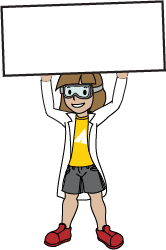
The PhET website does not support your browser. We recommend using the latest version of Chrome, Firefox, Safari, or Edge.

Science Experiments for Kids: Learning About Gravity
Up, up, and away: fun and easy gravity experiments for kids.
Table of Contents
Amaze your friends and family with a science show. Ask your audience to predict the outcome of each of these easy science experiments about gravity .
All objects on Earth are pulled toward the planet’s center by the force of gravity. Gravity is the force that makes a basketball swish through a hoop. Gravity is the force that makes your glass of juice crash to the floor when it slips out of your hand. Gravity is the force that keeps your feet on the ground when you go for a walk. As Judy Breckenridge points out in Simple Physics Experiments with Everyday Materials, “Without gravity we would all float off into outer space.” Hooray for gravity!
In this post, we will share some of the best gravity experiments that you can do with your kids, using everyday materials that you can find at home. From balloon rockets to pendulum painting, these experiments will keep your kids entertained and educated all at once. Get ready to inspire your little ones with the wonder of science!
Quick Introduction to Gravity
Gravity is the force by which a planet or other body draws objects toward its center. The force of gravity keeps all of the planets in orbit around the sun . Earth’s gravity is what keeps you on the ground and what makes things fall. It’s what holds the atmosphere in place so we can breathe and it’s what allows us to use rockets to launch into space.
Gravity is a fundamental force of nature that is present everywhere in the universe. It is what gives objects weight and is responsible for the motion of planets, stars, and galaxies. Without gravity, the universe as we know it would not exist.
Understanding the basics of gravity is important for many areas of science, including physics, astronomy, and engineering. By conducting simple gravity experiments, kids can learn about this fascinating force of nature in a fun and engaging way. From exploring how gravity affects different objects to create their own mini-gravity wells, there are many exciting experiments that kids can do to learn more about this fundamental force.
Science Experiment: Dropping objects of different weights
Experiment 1: Dropping objects of different weights is a classic gravity experiment that teaches kids about mass and gravity. All you need for this experiment are a few objects of different weights, like a feather, a rock, and a rubber ball, and a place to drop them from, like a balcony or a staircase.
Start by asking your child what they think will happen when they drop each object. Will the heavier object fall faster or slower than the lighter object? Then, drop each object one by one and observe what happens.
You’ll find that all objects fall at the same rate, regardless of their weight. This is because gravity pulls all objects towards the earth at the same acceleration rate , which is 9.8 meters per second squared. You can explain this to your child by saying that the earth’s gravity pulls all objects towards it with the same force, so they all fall at the same rate.
You can also ask your child to try dropping the objects from different heights and see if that affects the way they fall. This will give them a better understanding of how gravity works and how it affects objects. This experiment is a great way to introduce your child to science and to help them understand the world around them.
Science Experiment: Making a gravity well
A gravity well is a concept that is used to represent the way gravity affects the path of objects in space. In this experiment, your child will learn how gravity works by creating a visual representation of a gravity well.
Materials needed:
- A large, flat container (such as a baking tray)
- A small ball (such as a marble)
- Food coloring (optional)
Instructions:
- Pour a thin layer of flour into the flat container, making sure it covers the entire surface.
- Place the small ball in the center of the container.
- If desired, add a few drops of food coloring to the flour around the ball.
- Use your fingers to gently press down on the flour around the ball, creating a depression in the flour. The depression should be deepest around the ball and gradually become shallower as you move away from the ball.
- Observe how the ball remains in the center of the depression you created in the flour. This is because the flour represents the fabric of space-time and the ball is pulled towards the center by the force of gravity.
To take the experiment further, you can try adding more balls to the container and observe how they behave differently depending on their mass and distance from the center of gravity well. This experiment is a great way to introduce your child to the fascinating concept of gravity and spark their curiosity about the world around them.
Science Experiment: Magnets to simulate gravity
Using magnets to simulate gravitational pull can be a fun and interactive way to teach kids about gravity. In this experiment, you’ll need a few simple materials such as a magnet, paper clips, and a thin piece of string.
First, tie the string to the magnet and then attach a few paper clips to the other end of the string. Next, hold the magnet above one of the paper clips and release it. You’ll notice that the paper clip is attracted to the magnet and will follow it as it falls. This is similar to how gravity works, as objects with more mass are attracted to each other.
You can also use this experiment to show how different objects with varying masses will be affected by gravity. Try attaching different objects to the string, such as a feather, a coin, and a small toy car. You’ll notice that the magnet has a stronger pull on the coin and car due to their greater mass, while the feather will not be affected as much because it has less mass.
This experiment is a great way to introduce kids to the concept of gravity in a fun and interactive way. It can also be a starting point for further discussions about the laws of physics and the universe around us.
Science Experiment: Making a simple pendulum
Making a simple pendulum is a fun and easy way to learn about gravity and motion. For this experiment, you will need a few simple materials:
- A piece of string or thread
- A small weight, such as a paperclip or washer
- A sturdy surface to attach the string
To make your pendulum, tie the string around your weight and attach the other end to your sturdy surface. You can use a table, a chair, or any other surface that won’t move around too much.
Once your pendulum is set up, give it a gentle push to set it swinging. Watch how it moves back and forth, and notice how the speed and direction of the pendulum change.
To make your experiment even more fun, try changing the length of the string or the weight of the pendulum. How does this affect the way the pendulum moves? Can you predict how the pendulum will behave based on these changes?
Making a simple pendulum is a great way to introduce kids to the concept of gravity and motion. Plus, it’s a fun and easy experiment that can be done with materials you probably already have at home.
Science Experiment: Gravity and Air Resistance
Before performing this experiment, show your audience a shoe and a flat piece of notebook or copy paper. Explain that you will be dropping both objects from the same height. Then ask your audience these questions:
- Who thinks the shoe will hit the floor first?
- Who thinks the paper will hit the floor first?
- Who thinks both objects will hit the floor at the same time?
Experiment:
- Hold the shoe in one hand and the paper in the other.
- Hold both objects high in front of you at equal heights.
- Release both objects at the same time.
Observation: The shoe hits the floor first.
Explanation: Because of the paper’s shape, its fall is slowed by air pushing up against its under-surface – this slowing effect is called air resistance.
Science Experiment: Effect of Gravity on Plant Growth
One of the most interesting aspects of gravity is its effect on living organisms. In this experiment, we’ll be looking at how gravity affects plant growth.
To start, you’ll need to gather some materials. You’ll need:
- 2 identical plants
- 2 identical pots
- Begin by filling both pots with soil and planting one of your plants in each pot.
- Water them both thoroughly and place them side by side in a sunny location.
- Now comes the fun part. Take one of the pots and place it on its side. This will cause the plant inside to be growing at a 90-degree angle to the ground. Leave the other pot standing upright.
- Over the next few weeks, observe the growth of both plants. Measure their height using the ruler and take note of any other differences you can see.
What you should find is that the plant growing at a 90-degree angle to the ground will grow differently than the plant growing upright. This is because gravity plays an important role in how plants grow. The plant growing on its side will have to work harder to grow against the pull of gravity, resulting in a different growth pattern than the one growing normally.
This experiment is a great way to teach kids about the effects of gravity on living organisms and can lead to further discussions about how gravity affects everything from trees to humans. Have fun experimenting!
Science Experiment: Gravity and Weight
Before performing this experiment, show your audience the shoe and the piece of paper crumpled into a ball. Explain that you will be dropping both objects from the same height. Then ask your audience these questions:
- Who thinks the paper ball will hit the floor first?
- Hold the shoe in one hand and the paper ball in the other.
Observation: The shoe and the paper ball hit the floor at the same time.
Explanation: Even though the earth exerts more pull on a heavier object, a lighter object experiences a greater degree of acceleration, meaning that it moves at a greater speed. Consequently, objects of different weights fall at the same rate when other forces such as air resistance are not a factor.
Science Experiment: Center of Gravity
Now it’s time for audience participation in your science show. Ask for volunteers for each of these exercises involving the center of gravity:
Pick up a penny
Ask a volunteer to stand against a wall with his feet together, heels pressed against the wall. Place a penny about one foot away on the floor in front of him. Ask him to pick up the penny without moving his feet or bending his knees. Can he do it?
Lift your left foot
Ask a volunteer to stand with her right side against a wall, pressing her right foot and cheek against it. Instruct her to lift her left foot off the floor. Can she do it?
Jump forward
Ask a volunteer to bend forward and grab his toes, keeping his knees slightly bent. Tell him to jump forward without letting go of his toes. Can he do it?
Ask a volunteer to sit in a straight-backed chair. Tell her to keep her back straight, her feet flat on the floor, and her arms folded across her chest. Then ask her to stand up. Can she do it?
Observation: Because all of these tasks restrict the center of gravity, it’s almost impossible for a person to perform any of them.
Explanation: As far as gravity is concerned, the weight of an object is concentrated at a single center point. The center of gravity for an object with a regular shape – the Earth, for example – is located at its geometric center. However, in irregularly shaped objects – the human body , for instance – the center of gravity moves around. If you try to shift too far away from your center of gravity, you’ll lose your balance.
Share Fun Science Experiments With Family and Friends
Learning new things about the world around you is fun and exciting. It’s even more fun when you share your discoveries with your family and friends. Gravity is just one of the interesting forces of nature – there are many more to explore and share.
Final thoughts on teaching kids about gravity
Gravity is a fascinating concept that has been studied and explored by scientists for centuries. Teaching kids about gravity can be a fun and engaging way to introduce them to the wonders of science and the natural world around them.
By conducting simple experiments and activities, kids can learn about the basic principles of gravity and how it affects the world around us. From dropping objects of different weights to observing how objects fall at the same rate, there are endless ways to explore this fascinating force.
Not only can teaching kids about gravity be fun, but it can also help to develop their critical thinking skills, problem-solving abilities, and scientific knowledge. By encouraging kids to ask questions and explore the world around them, we can inspire a love of learning and an appreciation for science that can last a lifetime.
Teaching kids about gravity can be a fun and rewarding experience for both children and adults alike. By providing opportunities for hands-on exploration and discovery, we can help kids develop a lifelong love of science and learning. So, let’s get started and see where the wonders of gravity take us!
- Bardhan-Quallen, Sudipta. Championship Science Fair Projects . NY: Sterling Publishing, 2004.
- Breckenridge, Judy. Simple Physics Experiments with Everyday Materials . NY: Sterling Publishing, 1993.
- Cobb, Vicki. Bet You Can’t! NY: Lothrop, Lee & Shepard Books, 1980.
Leave a Comment Cancel reply
You must be logged in to post a comment.

3 Unique Gravity Experiments to Try with Your Kids
Simply put, gravity is the force of the earth that pulls objects towards its core, preventing them from floating off into space. For many adults, explaining the concept of gravity to a child can seem daunting. However, through the use of the following gravity experiments for kids, children will gain a better grasp of gravity’s role in our everyday lives while also having some fun!
Paperclip Gravity Experiment
Most gravity experiments don’t require many materials. For this experiment you’ll use:

- Paper clips
First, tie one end of a piece of string to a paperclip and tie the other end around the stick. Repeat twice more so that the stick has three paper clips attached. Hold the stick up in the air, allowing the paperclips hang freely. Tilt the stick back and forth.
As is demonstrated, Earth’s gravity is continuously pulling our bodies and the objects around us to its core. Even when the stick is tilted, Earth’s gravitational pull exerts its force on the paper clips pulling them straight down toward the Earth.
Gravity Water Drop
This next experiment requires just three items:
- A paper cup
On the outside of the cup near the bottom, poke a hole using a pencil. Placing a finger over the hole, fill the cup with water. Remove your finger from the hole. You should find that the water flows out of the cup in an even, steady stream (if the water is not quite flowing smoothly, try poking a new hole and refill the cup with water). Next, holding your finger over the hole, fill the cup once again with water. Drop the cup, removing your finger from the hole at the same time. You’ll find that as the cup falls, no water flows out of the hole.
When you first held the cup in the air and removed your finger, gravity pulled the water down towards the ground and water pressure forced it out of the hole. However, when the cup and water fell at the same speed, there is no water pressure. Without this force, the water remains inside the cup as gravity pulls both to the ground.
Galileo’s Experiment

- A sturdy chair
- Various household items
Gather items of differing weights and sizes, such as a ball, action figure or doll, and a balloon. Have your child stand on top of the chair while holding the items. One at a time, have your child drop each item from the same height. Keep track of how long it takes each item to reach the ground.
Though many believe that larger, heavier items will hit the ground first, this is not true. The rate of Earth’s gravitational pull on all objects is the same regardless of weight. Given the absence of air resistance, each object should reach the floor at the same time. Do your finding support this?
Testing the laws of gravity (or defying them !) can be done in a variety of hands-on, entertaining ways around the house and at school. Experiments for kids like those above are a great way to get kids learning and asking important questions about the world around them.
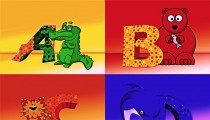
- Next Post: Using Pre-School Games to Help Kids Learn the Alphabet →
- ← Previous Post: Kindergarten Word Searches to Begin Building Your Child’s Vocabulary
Sign Up for Our Amazing Newsletter!
A daily update by email. Science news, great photos, sky alerts.
The Tunguska explosion rocked Siberia 116 years ago
The Tunguska explosion: June 30, 1908
On today’s date 116 years ago, the largest asteroid impact in recorded history struck on a warm summer morning in Siberia, Russia. Now, we observe Asteroid Day each year on June 30, on the anniversary of what’s now known as the Tunguska explosion .
The explosion happened over the sparsely populated northern forestland above the Podkamennaya Tunguska River in what is present-day Krasnoyarsk Krai .
Incredibly, the blast released enough energy to kill reindeer and flatten an estimated 80 million trees over an area of 830 square miles (2,150 square km). Witnesses reported seeing a fireball – a bluish light, nearly as bright as the sun – moving across the sky. In addition, a flash and a sound similar to artillery fire was said to follow it. Moreover, a powerful shockwave broke windows hundreds of miles/kilometers away and knocked people off their feet.
Yet, ultimately, decades passed before anyone could explain the event.
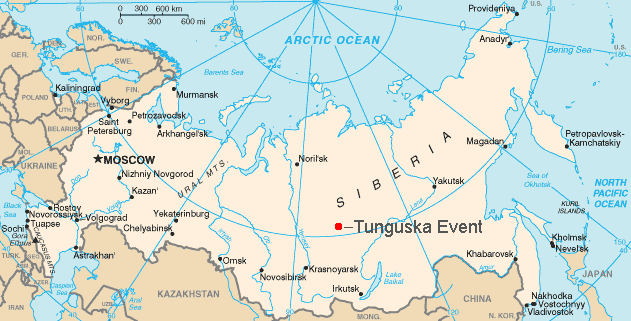
Tunguska explosion largest in recorded history
A mysterious aspect of the Tunguska event was that, surprisingly, no one ever found a crater. But, even without a crater, scientists still categorized it as an impact event. They now believe the incoming object never struck Earth. Instead, it exploded in the atmosphere, causing what’s known as an air burst . This type of atmospheric explosion was still enough to cause massive damage to the forest in the region.
Scientists determined the object was most likely a stony asteroid approximately the size of a 25-story building, traveling at a speed of about 33,500 miles (54,000 km) per hour and exploded 3 to 6 miles (5 to 10 km) above Earth’s surface.
The Tunguska explosion was equal to about 4 megatons of TNT. That would make it 250 times more powerful than the atom bomb dropped on Hiroshima.
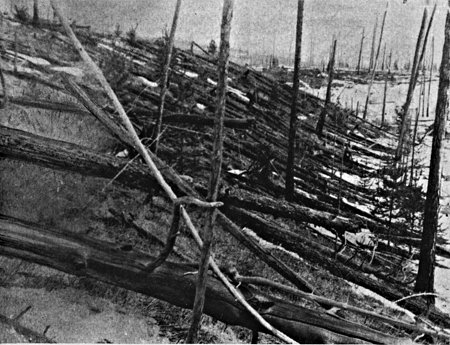
Understanding the Tunguska explosion
Why did it take so long – the better part of the 20th century – for scientists to understand what caused the Tunguska event? For one thing, it was almost two decades before the first scientists reached this remote region of Siberia. In 1927, Leonid Kulik led the first Soviet research expedition to investigate the Tunguska event. He made an initial trip to the region, interviewing local witnesses and exploring the area of fallen trees.
But Kulik did not find any meteorite fragments or an impact crater.
As a result of Kulik’s initial investigation, some concocted wild theories to explain the Tunguska event. People claimed a stricken alien spacecraft caused the destruction. In addition, later, they pointed to a mini-black-hole, or a particle of antimatter.
The truth is just as interesting, and perhaps more terrifying … because it can happen again.
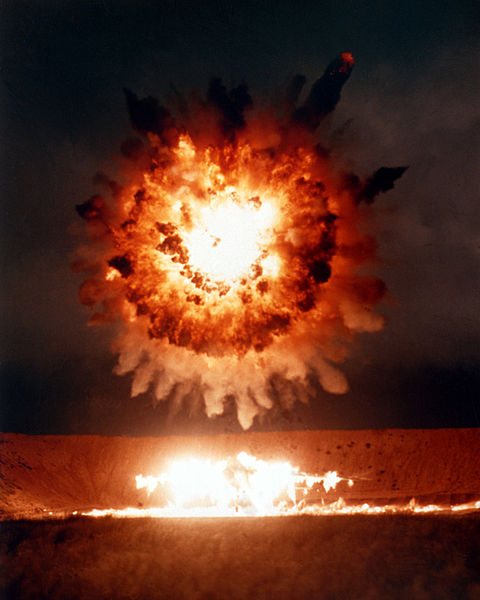
The Chelyabinsk meteor impact
In fact, the Tunguska event basically did happen again, just on a smaller scale, with the Chelyabinsk meteor , 105 years later. On February 15, 2013, a similar, although smaller, airburst occurred over the city of Chelyabinsk , Russia, 1,500 miles (2,400 km) to the west of Tunguska.
Deborah Byrd : Vapor trail left by the Chelyabinsk meteor, as captured by Flickr user Alex Alishevskikh. Many people were driving and st… pic.twitter.com/2tT1CIwIfy — Sky Observer (@SkyObserve) September 5, 2017
The Chelyabinsk event provided vital clues as to what happened during the Tunguska event. As NASA explained , new evidence arrived to help solve the mystery of Tunguska:
This highly documented fireball created an opportunity for researchers to apply modern computer modeling techniques to explain what was seen, heard and felt. The models were used with video observations of the fireball and maps of the damage on the ground to reconstruct the original size, motion and speed of the Chelyabinsk object. The resulting interpretation is that Chelyabinsk was most likely a stony asteroid the size of a five-story building that broke apart 15 miles (24 kilometers) above the ground. This generated a shock wave equivalent to a 550-kiloton explosion. The explosion’s shockwave blew out roughly a million windows and injured more than a thousand people. Fortunately, the force of the explosion was not enough to knock down trees or structures. Per current understanding of the asteroid population, an object like the Chelyabinsk meteor can impact the Earth every 10 to 100 years on average.
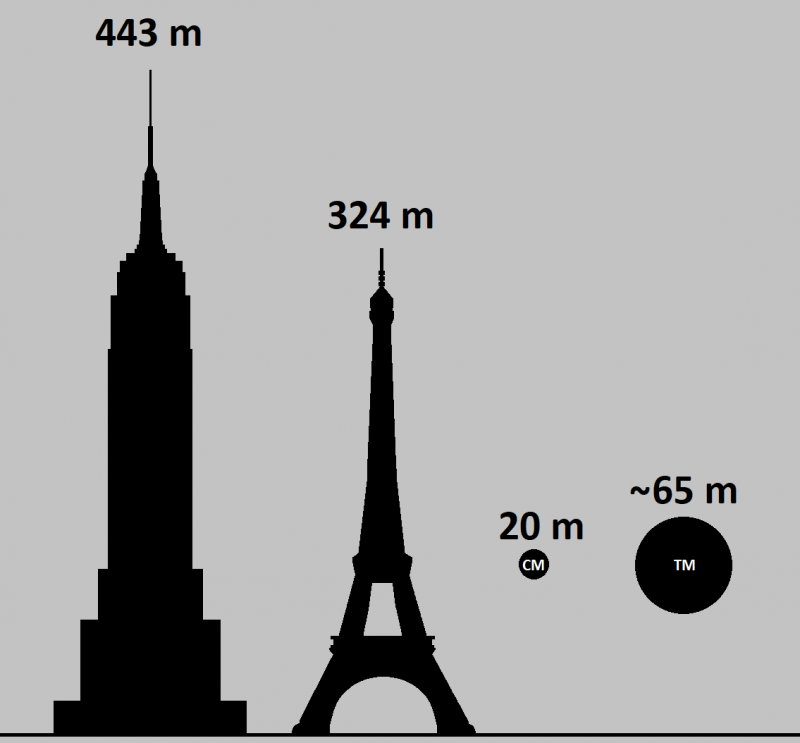
Studying the Tunguska explosion to prepare for future events
In 2019, scientists published new research about the Tunguska event in a series of papers in a special issue of the journal Icarus . A workshop held at NASA’s Ames Research Center in Silicon Valley and sponsored by the NASA Planetary Defense Coordination Office inspired the research.
The theme of the workshop was Reexamining the astronomical cold case of the 1908 Tunguska impact event .
Read more about NASA’s research on the Tunguska explosion
In recent decades – due to the Tunguska event, and other, smaller impacts – astronomers have come to take the possibility of catastrophic comet and asteroid impacts seriously. They now have observing programs to watch for near-Earth objects (NEOs), as they’re called. At regular meetings they discuss what might happen if we do find a large object on a collision course with Earth.
DART’s successful asteroid mission
DART – the Double Asteroid Redirect Test – was a huge hit, quite literally. The spacecraft smashed into an asteroid moon – called Didymos B, or Dimorphos – on September 26, 2022. The goal was to prove that we can send a spacecraft to push an asteroid slightly in its orbit. It was practice for a possible future scenario in which we find a hazardous asteroid barreling toward Earth. NASA said on October 11, 2022, that analysis of data obtained from the DART mission shows the spacecraft did, indeed, successfully alter the orbit of Dimorphos .
Future asteroid mission
ESA’s Hera mission is due to launch in October 2024. The Hera mission will journey to Didymos to study DART’s impact.
Lorien Wheeler , a researcher at NASA Ames Research Center, working on NASA’s Asteroid Threat Assessment Project , said :
Because there are so few observed cases, a lot of uncertainty remains about how large asteroids break up in the atmosphere and how much damage they could cause on the ground. However, recent advancements in computational models, along with analyses of the Chelyabinsk and other meteor events, are helping to improve our understanding of these factors so that we can better evaluate potential asteroid threats in the future.
Astronomer David Morrison , also at NASA Ames Research Center, commented :
Tunguska is the largest cosmic impact witnessed by modern humans. It also is characteristic of the sort of impact we are likely to have to protect against in the future.
Bottom line: The Tunguska explosion on June 30, 1908, was the largest asteroid impact in recorded history. It flattened 830 square miles (2,150 sq km) of Siberian forest. Researchers are preparing for future Tunguska-sized events.
Source: Icarus special papers on Tunguska
Read more: Detecting asteroids near the sun with NEOMIR
Paul Scott Anderson
About the author:, kelly kizer whitt, like what you read subscribe and receive daily news delivered to your inbox., exploring mars’ grand canyon, plus a ufo camera for mars, new mars gravity map: a lost ocean lava under olympus mons, did earth have rings 466 million years ago, new cloud atlas of mars for cloudspotting on the red planet, equuleus the little horse on autumn nights.
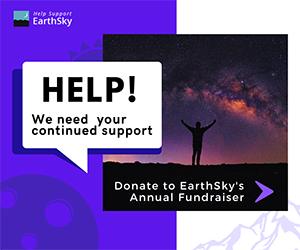
View prices for your travel dates
- Excellent 0
- Very Good 2
- All languages ( 2 )
- Russian ( 2 )
- English ( 0 )
Own or manage this property? Claim your listing for free to respond to reviews, update your profile and much more.
BELY DOM HOTEL

Crash of an Ilyushin II-12P in Krasnoyarsk: 7 killed


IMAGES
VIDEO
COMMENTS
The ladder paradox (or barn-pole paradox) is a thought experiment in special relativity.It involves a ladder, parallel to the ground, travelling horizontally at relativistic speed (near the speed of light) and therefore undergoing a Lorentz length contraction.The ladder is imagined passing through the open front and rear doors of a garage or barn which is shorter than its rest length, so if ...
12 Gravity Experiments To Try. Here are 12 gravity science experiments that are great for elementary school kids. Learn about gravity and its effects in a fun and hands-on way. You may also want to explore: Air Resistance Projects. Dropping Objects. Gather various objects of different weights and sizes (e.g., a feather, a paperclip, a small ball).
All of these stations meet the Next Generation Science Standards for Fifth Grade (5-PS2-1). We include everything the NGSS standards require for your fifth-graders to understand Gravity on Earth. These eight science stations teach and incorporate important skills through labs, experiments, videos, reading passages, and games.
In your own experiments, you can collect data from shorter or longer distances. $$\text{Acceleration} = \frac{3.33 \text{m/s} - 0 \text{m/s}}{0.33 \text{s}} = 10 \text{m/s}^2$$ What's Going On? Gravity is a force that draws objects to one another. In this case, the objects are the flashlight and the earth. This fundamental interaction of nature ...
These lessons are aimed at creating life-long science interests so check out our 27 amazing activities that'll help you do just that! 1. Watch "How Gravity Works For Kids". This animated video is perfect to start a unit. The video explains gravity in simple science vocabulary that students can understand.
Press a small piece of clay into the bottom of the first half ball. Insert a straw vertically into the clay. Pull the straw down toward the table and then release. The straw should flip back into a vertical position. Repeat the experiment with various sizes of clay balls attached to the top of the straw and observe the results.
Galileo and Gravity. Galileo was a famous scientist in the 16th and 17th Century. His most famous observation was that two objects of the same size but slightly different mass (how much "stuff" it is made of) hit the ground at the same time, as far as he could tell, if they are dropped from the same height. This happens because the ...
5. Gravity Water Cup Drop. The water cup drop experiment teaches students about the laws of gravity and the effects of air resistance on falling items in a simple yet entertaining way. Students will perform this experiment by dropping a cup of water from a height and watching it fall. 6.
The Hole in the Cup. For this experiment you need a paper cup and some water. Poke a hole in the cup and cover it with a finger; fill the cup with water. Take your finger from the hole and notice the water spills out. Though gravity pulls down both objects, only water moves freely (because you're holding the cup); thus, gravity forces the water ...
1.Gravity Drop Race: Set up a ramp with two equal lanes, then let kids pick two objects to race down the ramp. 2.Ball Bounce Experiment: Students measure how high different balls bounce on various surfaces. 3.DIY Parachutes: Let the children design and create their own parachutes using plastic bags, string, and tape.
15+ Preschool Science Experiments that Explore Gravity. Defy Gravity - This super cool activity is easy to make with paperclips and magnets. (Buggy and Buddy) Drip Painting - Discover what happens when watercolors are dropped from the top of a vertical surface. Galaxy in a Bottle - The glitter doesn't fall down, but instead rises as it ...
This engaging video shows multiple gravity-defying experiments to try, but our favorite begins at minute 4:15. By swinging your cup or bottle at a constant rate, the water will remain in the vessel, seemingly defying gravity! Nanogirl's explanation helps contextualize this phenomenon for your learner. Learn More: Nanogirl STEM Activities for Kids
Visualize the gravitational force that two objects exert on each other. Adjust properties of the objects to see how changing the properties affects the gravitational attraction.
Cavendish's result provided additional evidence for a planetary core made of metal, an idea first proposed by Charles Hutton based on his analysis of the 1774 Schiehallion experiment. [18] Cavendish's result of 5.4 g·cm −3, 23% bigger than Hutton's, is close to 80% of the density of liquid iron, and 80% higher than the density of the Earth's ...
In this video, you will see awesome and simple gravity experiments and how to challenge gravity with simple tricks. you can do these experiments in your home...
Science Experiment: Dropping objects of different weights. Experiment 1: Dropping objects of different weights is a classic gravity experiment that teaches kids about mass and gravity. All you need for this experiment are a few objects of different weights, like a feather, a rock, and a rubber ball, and a place to drop them from, like a balcony or a staircase.
Experiment för barn, vuxna, förskola, skola och hemma. Experimentarkivet. Experimentarkivet - Enkla experiment för barn och vuxna Experiment inom biologi, kemi, fysik, jorden ... Om läges- och rörelseenergi, samt gravitation. Gummibenet. Biologi. Skapa ett gummiben av ett äkta ben! Om vilka beståndsdelar ett ben har. Tunga tidningen. Jorden.
Investigating gravity. Falling Rhythm. Listen to the rhythm of falling weights. Magnetic Atmosphere Model. Levitating magnets show how the Earth's atmosphere stacks up. Parachute Plummet. Launch parachutes to see how they fall. Slow Your Roll. Use a slow-moving wheel to investigate position, speed, and acceleration.
Gravity Water Drop. This next experiment requires just three items: A paper cup. Water. A pencil. On the outside of the cup near the bottom, poke a hole using a pencil. Placing a finger over the hole, fill the cup with water. Remove your finger from the hole. You should find that the water flows out of the cup in an even, steady stream (if the ...
The Tunguska event was a large explosion of between 3 and 50 megatons [2] that occurred near the Podkamennaya Tunguska River in Yeniseysk Governorate (now Krasnoyarsk Krai), Russia, on the morning of 30 June 1908. [1] [3] The explosion over the sparsely populated East Siberian taiga flattened an estimated 80 million trees over an area of 2,150 km 2 (830 sq mi) of forest, and eyewitness ...
The Tunguska explosion: June 30, 1908. On today's date 116 years ago, the largest asteroid impact in recorded history struck on a warm summer morning in Siberia, Russia. Now, we observe Asteroid ...
Bely Dom Hotel, Krasnoyarsk: See traveler reviews, 28 candid photos, and great deals for Bely Dom Hotel, ranked #22 of 36 B&Bs / inns in Krasnoyarsk and rated 4 of 5 at Tripadvisor.
Fifteen minutes after takeoff from Krasnoyarsk-Severniy Airport, the oil pressure on the left engine dropped. The crew shut down the engine, feathered the propeller and decided to return to Krasnoyarsk for a safe landing.